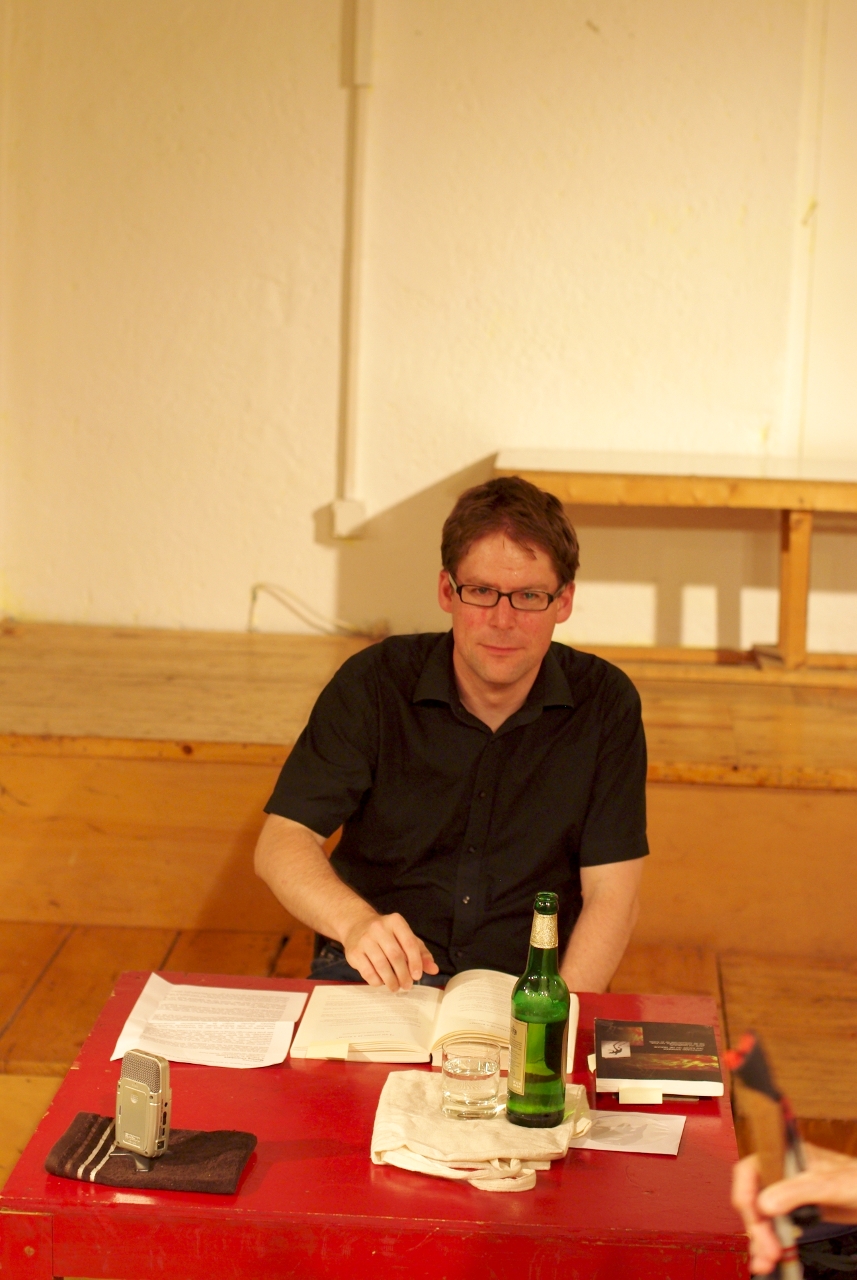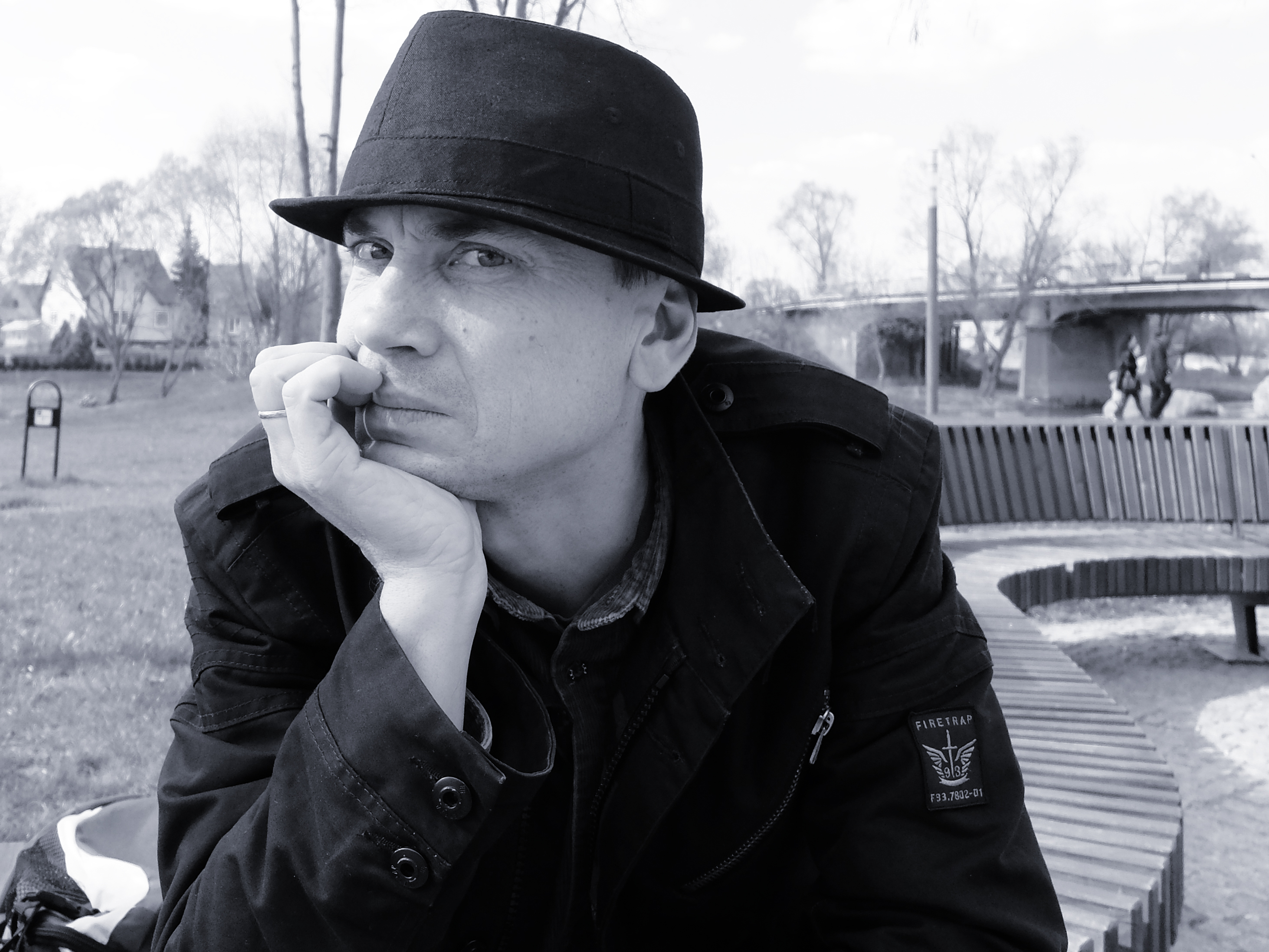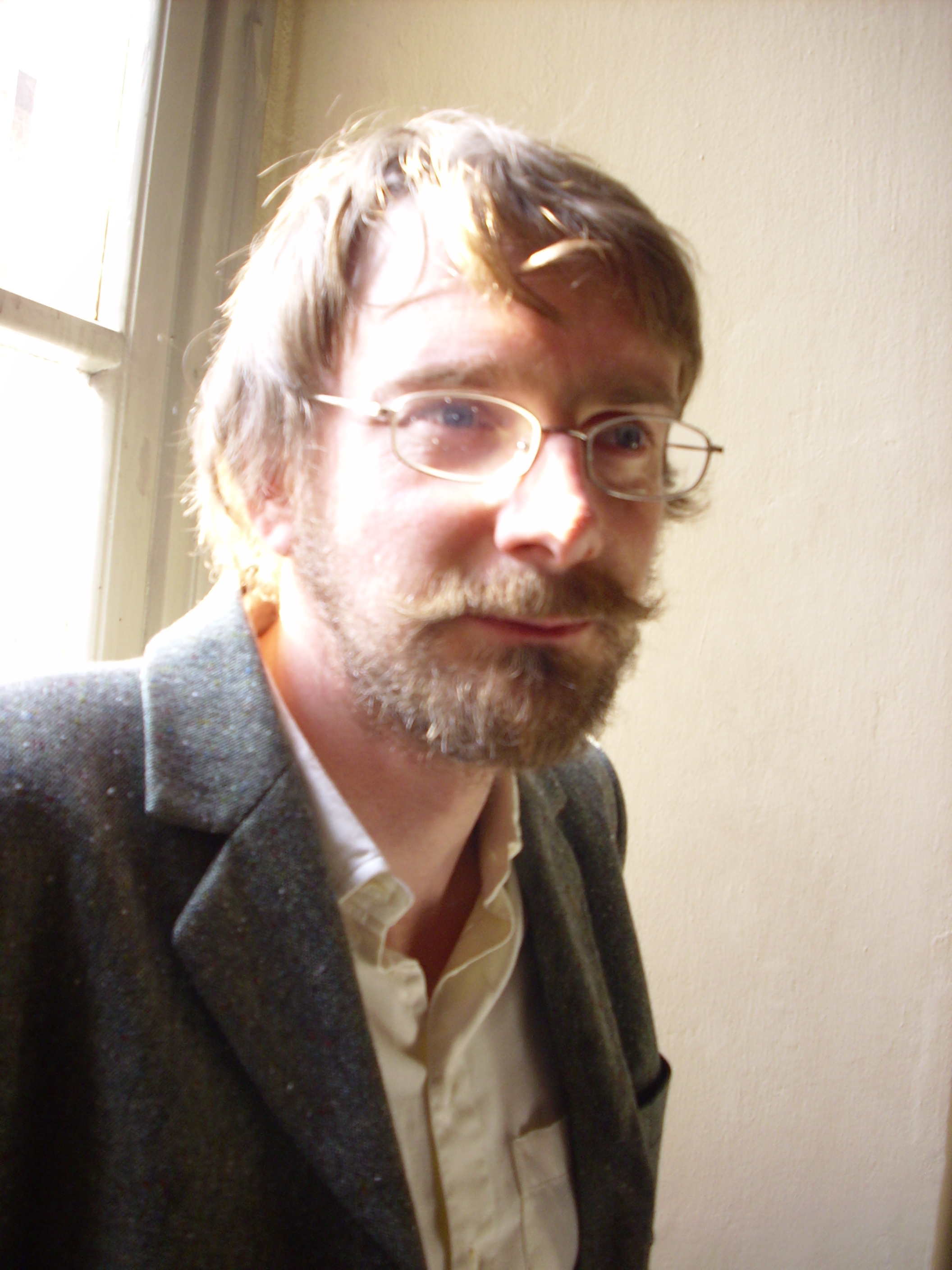Sang Mi Ahn - Metabolism
“Metabolism is the set of life-sustaining chemical transformations within the cells of living organisms. The word Metabolism also can refer to all chemical reactions that occur in living organisms, including digestion and the transport of substances into and between different cells.” - Wikipedia In this piece, I wanted to focus on blood cells and their voyage from one vessel to another. The blood cells transport a variety of materials including oxygen, nutrients, waste, and signals to organs and tissues throughout our body. These substances are expressed in the music as different stratifications of foreground and background, as well as sparkling gestures. Vessel diameter and length vary enormously and they influence the resistance to blood flow within a single vessel. The changes of density in the music depict the blood flow as blood cells travel from place to place. As blood cells move towards the heart, the pulsation in the piece becomes more prominent.
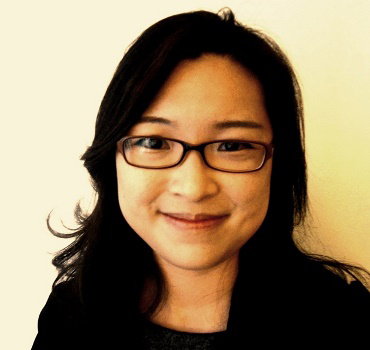
Biography
Sang Mi Ahn is a composer of both acoustic and electro-acoustic mediums. Her recent awards include winner of the 2014 Indiana University Dean's Prize in Composition, the 31st Republic of Korea Composition Prize, the 2013 Heckscher Composition Prize, the Judith Lang Zaimont Prize at the 2013 Competition of The International Alliance for Women in Music (IAWM), winner of the 2011 Women Composers Festival of Hartford International Composition Competition, and second prize at the Sixth International Musical Composition Contest held by the Long Island Arts Council at Freeport. Ahn's acoustic works have been performed by many groups, including the Soriall Philharmonic, Trio Haan, Idee Fixe Ensemble, Contemporary Directions Ensemble, the Hartt Independent Chamber Orchestra, and University of Michigan and Indiana University chamber orchestras, as well as acclaimed soloists. Her electronic music compositions have also been featured in festivals and conferences across the United States as well as in Europe— at the 2013 and 2012 International Computer Music Conference (ICMC), Symposium on Acoustic Ecology, N_SEME, the CSUF New Music Festival, the Sweet Thunder Festival of Electro-Acoustic Music, the Americas Society, and at the 2012 North American Saxophone Alliance Biennial Conference. Ahn completed a Doctor of Music degree in Composition from Indiana University, where she also earned her Master of Music in Composition and served as an Associate Instructor in Music Theory.
Andreatta Moreno & Gabriele D’Annunzio - Aprile (A piano solo version)
L’œuvre proposée consiste en la version instrumentale pour piano solo d’Aprile, une « chanson hamiltonienne décadente » composée par Moreno Andreatta à partir d’un texte du poète italien Gabriele D’Annunzio et visualisée géométriquement par Gilles Baroin à l’aide de son modèle d’accords en dimension 4 (l’hypersphère des accords) ainsi que du Tonnetz (ou réseau des notes). Le processus compositionnel fait usage de trois cycles hamiltoniens distincts dans ce réseau, chaque cycle étant associé à une progression harmonique permettant de passer à chaque instant de tout accord majeur à tout accord mineur ayant avec celui-ci deux notes en commun. Les trois progressions harmoniques permettent ainsi de toucher une et une seul fois tous les accords majeurs et mineurs avec un principe de conduite parcimonieuse des voix (optimal voice leading). De plus, les trois cycles retenus ont la propriété de ne pas pouvoir être décomposables en sous-cycles de longueur plus petite, ce qui explique le caractère « imprédictible » du parcours harmonique dont le trajet est chaque fois visualisé dans le Tonnetz de dimension deux.
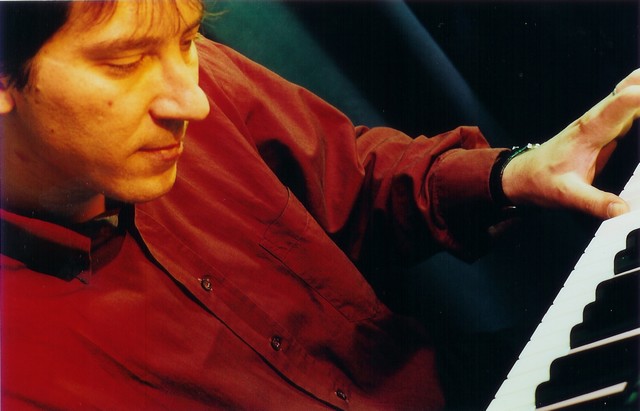
Biographies
Moreno Andreatta est chercheur CNRS au sein de l'équipe de « représentations musicales » du laboratoire Sciences et Technologies de la Musique et du Son - STMS - intégré à l'IRCAM (Institut de Recherche et de Coordination Acoustique/Musique). Son domaine de recherche concerne les liens entre mathématique et musique aussi bien dans la musique savante que dans la musique pop et la chanson. Vice-président de la Society for Mathematics and Computation in Music, il est le coordonnateur à l'IRCAM du Master ATIAM (acoustique, traitement du signal et informatique appliqués à la musique). Il est auteur d'une cinquantaine de chansons, principalement sur des textes de poètes (de Virginia Woolf à Alda Merini, en passant par Pablo Neruda, Pier Paolo Pasolini, Mario Benedetti, Guido Gozzano, Gabriele D’Annunzio, Antonia Soulez, …).
Gilles Baroin est chercheur mathémusicien, membre de la Society for Mathematics and Computation in Music. Il travaille en collaboration avec l'Ircam, centre Pompidou, à Paris et vient d’intégrer le laboratoire MAIIA de l’ENAC pour y apporter ses compétences infographiques. Très actif dans la mise en place d'atelier, workshops et initiatives pédagogiques sur les rapports entre mathématique et musique, il collabore régulièrement avec des artistes, musiciens et compositeurs intéressés par la visualisation et représentation géométriques d'objets musicaux, à la fois dans des espaces discrets (accords, progressions harmoniques, …) mais aussi continus (timbres).
Peter Barnard - At the heart of It
Live recording of electromagnetic frequencies picked up from laptop using an amplified coil pick up. Heard along with these varying frequencies from the laptops components and other mechanical noises is a heartbeat - drawing parallels between the sounds of machines running and functions of the human body. Recorded in August 2013.

Biography
Peter Barnard’s practice incorporates video, installation, performance, sculpture and sound. Combining elements of minimalistic sculpture with audio compositions – Barnard creates work which calls into question the functionality of sound as it influences our experience of certain spaces and objects. Recent exhibitions have included: A Europe for All by All – Hundred Years Gallery, London (2014), Parallel Moment – Denton, Texas (2013), PUNK SALON – Schwartz Gallery, London (2013). Barnard’s work has also been featured in a number of radio programmes including The stranger that is next to me curated by Brandon Labelle (Echoes & Stress.fm, 2014) Peter Barnard studied Fine Art at Winchester School of Art, University of Southampton. He currently lives and works in Buckinghamshire, United Kingdom.
Matteo Bertolina - OBAFGKM (Oh Be A Fine Girl/Guy, Kiss Me)
Duration: 4'30" - stereo - 48000 Hz - 24 Bit - 77,8 MB. This piece is an artistic presentation of stellar classification. There are 7 little phases based on the first 7 letters of the Morgan–Keenan (MKK) system: O, B, A, F, G, K, M (a sequence from the hottest to the coolest). O (0'00"- 0'50"), B (0'50" - 1'40"), A (1'40" - 2'10"), F (2'10" - 3'00"), G (3'00" - 3'15"), K (3'15" - 3'37"), M (3'37" - 4'30")
Biography
Matteo Bertolina was born in 1988; he’s studying composition and electronic music with Paolo Ferrara and Javier Torres Maldonado. He took part in “Festival 5 Giornate” (Milan), "2011 Shanghai Electronic Music Week" and “Fifteen Minutes
Jason Bolte - Black Hole
Black Hole (2013) Black Hole is an electroacoustic work that draws material and inspiration from the study of gravitational waves that have been predicted to be produced by a small black hole falling into a zoom-whirl orbit with a super-massive black hole. The work is part of a larger multi-faceted installation called Black (W)hole, which is a collaboration between Sara Mast (visual artist), Jessica Jellison (architect), Christopher O’Leary (video/visual artist), Cindy Stillwell (video artist), Jason Bolte (composer), and Charles Kankelborg (physicist), along with guidance from physicists Joey Key and Nico Yunes. The work was commissioned as part of the Celebrating Einstein Event at Montana State University, and was funded in part by a Montana Space Grant Consortium through a NASA Education Enhancement Grant.
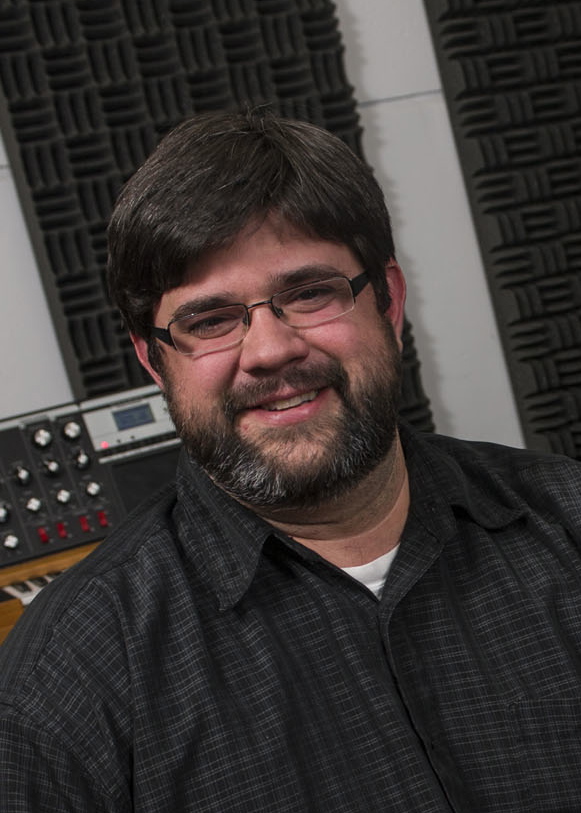
Biography
Jason Bolte is a composer of acoustic and electroacoustic music. He currently resides in Bozeman, Montana with his wonderful wife Barbara and their two daughters, Lila and Megan. Jason teaches music technology and composition at Montana State University where he also directs the MONtana State Transmedia and Electroacoustic Realization (MONSTER) Studios. Jason’s music is available on the ELECTRO<>ACÚSTICO, SEAMUS, Irritable Hedgehog, Vox Novus, and Miso Records labels.
Alejandro Brianza : Mikrokosmika
Many events happen and we do not give them importance. Miniature worlds escape our sight (and all senses) daily. MIkrokosmika try to evoke the feeling of attending one of these miniature universes and casual behaviors that offer their habitants in their fast-paced lives. Imagine... How interesting it would be to listen through a microscope?
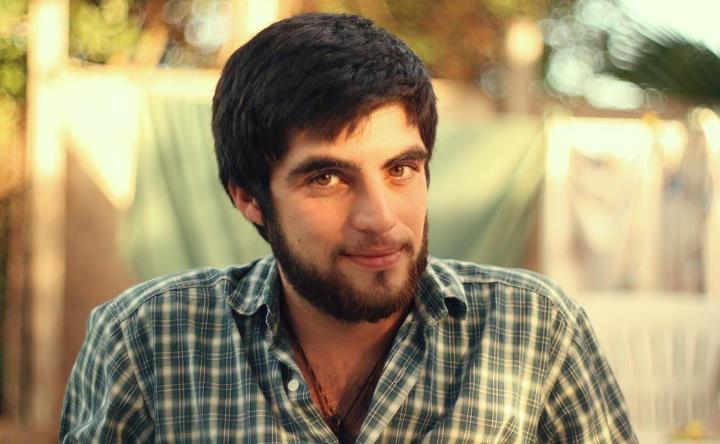
Biography:
Argentinian. Composer, researcher and teacher. Has a Bachelor in Audiovisual Arts and is currently pursuing master's degrees in Methodology of Scientific Research. Is sound technician, student of Composition and Recorder at Music Conservatory Julián Aguirre. He teaches at the University of Salvador and the National University of Lanús, where is also part of researchs related to sound technology, electronic music and contemporary languages, of which he has lectured at conferences and various academic meetings. Since 2012 is the programming coordinator at Sonoimágenes International Festival of acousmatic music and sound and multimedia art.
-----------------------------------------------------------------------------
Alejandro Casales : Trigonometry
Trignomoetry It’s a work of transformation. A percussive silver triangle is the natural source for work on granular synthesis, composing a new work, trigonometry is the name of this sound.
His most recent work has developed a multidisciplinary, interdisciplinary and intermediated , exposing sculptures, video and writing for performers such as the the Latin American Quartet and the Ensemble New Mexico . He has presented his work at festivals such as: EMU Fest - Inter- national Festival of Electroacoustic of Santa Cecilia in Italy in 2009 , 10 and 11; NYCEMF 2013 - The New York City Electroacoustic Music Festival , The International Workshop on Computer Music and Audio Technology Taiwan - WOCMAT 2010 and 2012 , the International Forum of New Music Manuel Enriquez of the years 2010 , 11, 12 and 13 Spring Electroacoustic Festival of Valencia, Spain . 2010 ; Electroacoustic Spring Festival Havana , Cuba . 2010 ; 2Bienal of Composition at the University of Cordoba , Argentina 2012 , Humanities , Arts and Technology (CHAT ) Festival , 2010 University of North Carolina, USA , International Festival of the Image of the University of the University of Caldas , Colombia , among other samples in Mexico.
------------------------------------------------------------------------------
Gordon Delap : Orbit
8 channels, fixed media
Generated from Stefan Bilbao’s physical models.
The sounds in this piece were generated using a short Matlab script, of approximately 200-300 lines, simulating a network of interconnected bar and plate elements using finite difference schemes. The composer in this case is faced with not only the tasks of writing
a score, consisting of a series of strikes sent to prescribed locations on the instrument, but also the somewhat larger job of designing the instrument itself, which may consist of upward of 100 elements. The composer may also specify locations at which output is read to a soundfile---any number of these may be chosen, and the sounds in this piece have all been generated directly in a multichannel format.
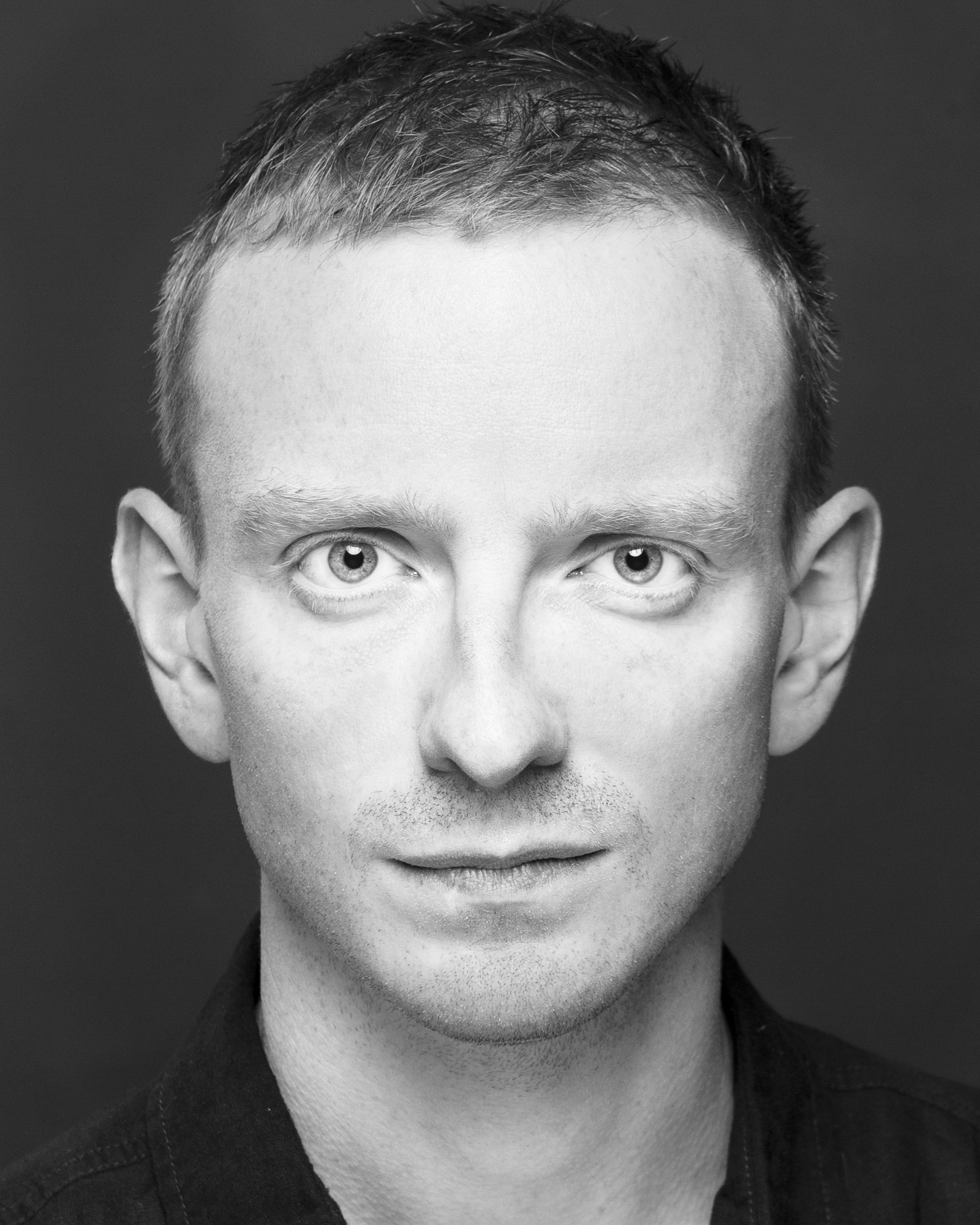
Biography:
Gordon Delap comes from Co. Donegal in Ireland. He studied composition at City University, London, and Queen's University, Belfast. He has undertaken residencies at Nadine Arts Centre in Brussels, and at the Technische Universität in Berlin where he carried out research into compositional applications of non-linear plate models. In recent times he has received commissions from the British Council, Spacenet, the Naughton Gellery, and Radio 3, and in 2005 he won first prize in the Projet Itinerant competition "Point de Repere". He is currently
lecturer in music technology at the National University of Ireland, Maynooth.
--------------------------------------------------------------------
Christopher DeLaurenti : Sous les notes de musique dans Superscriptio de Brian Ferneyhough
Sous les notes de musique dans Superscriptio de Brian Ferneyhough Comme si un hydrophone peut capturer les changements de pression de l'air, ce travail utilise l'extraction spectrale d'abattre et de filtrage des fréquences comprises entre 20 Hz et 500 Hz pour révéler des anomalies d'enregistrement, des nuances latentes, des bruits mécaniques, et des lueurs de conversation qui autrement ne seraient pas entendus.
Biographie :
Christopher DeLaurenti a pris ses micros en confluences inhabituelles de son, le silence, la musique et la parole, y compris des manifestations politiques, les centrales nucléaires volets, et les entractes d'orchestre. Ses albums, des performances, et d'autres projets d'écoute ont été profilé dans le New York Times, Artforum, et The Wire. Christopher effectue à des expositions, des concerts et des festivals, plus récemment, lors de la troisième Festival de pratique (Richmond, 2013), Whitney Biennial (New York, 2012), et INSTAL (Glasgow, 2010).
---------------------------------------------------------------------
Emily Doolittle : Music for Magpies

Biography:
Composer Emily Doolittle was born in Nova Scotia in 1972, and lived in Indiana, Amsterdam, New Jersey, Montreal, and Glasgow, before moving to Seattle in 2008 to teach music composition and theory at Cornish College of the Arts. She received her PhD from Princeton University in 2007, where she explored the question of whether some animal songs can be considered music in her dissertation Other Species’Counterpoint. In 2011 she was composer-in-residence at the Max Planck Institute for Ornithology, where she researched musician wren song in collaboration with ornithologist Henrik Brumm, wrote a set of pieces based on the songs of duetting birds, and presented a concert of her birdsong- related music, performed by members of the Bavarian State Opera. Current projects include a chamber opera based on the folktale Jan Tait and the Bear, to be performed in Shetland in 2014, and a violin concerto for Calvin Dyck and the Vancouver Island Symphony.
----------------------------------------------------------------------------------------------------------
Óscar Escudero : “ #2 “
#2 (violin, violoncello and accordion) is a work directly inspired by the formation process of the materials at the beginning of our universe, after Big Bang. Presented as a crystallized landscape, this piece is a sort of static architecture that freezes this very first moment, when the matter and antimatter particles were colliding chaotically between themselves. Despite the process on which it is based was random, the musical development is thought as a slow microexpansion. This is a fragment of a 30-minutes work built through architectures based on the cooling process of the young universe.
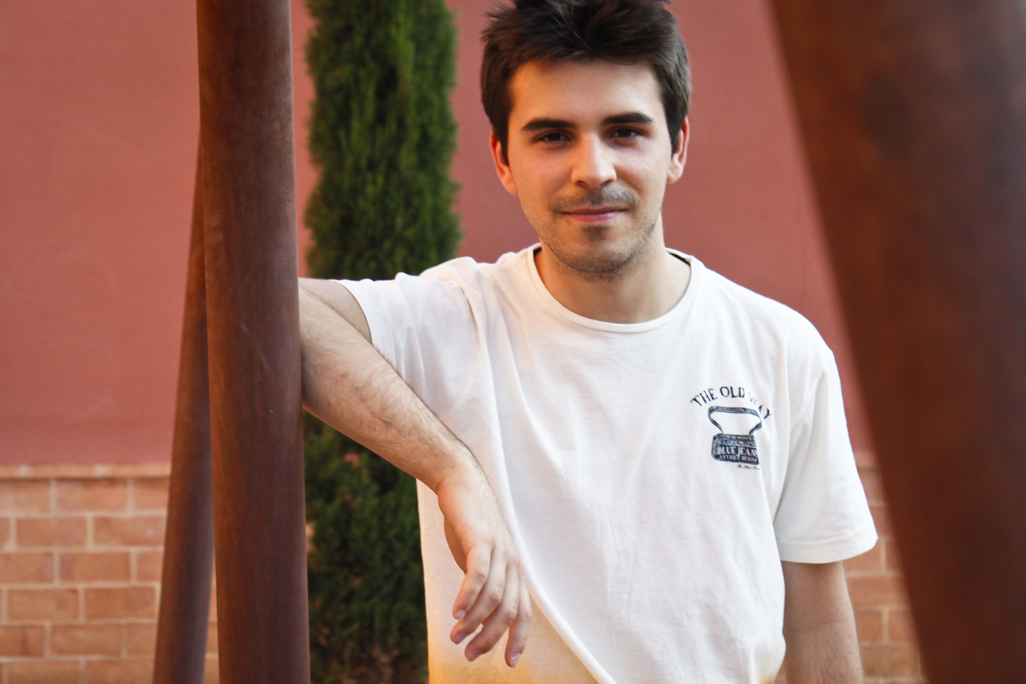
Biography:
Óscar Escudero was born in Alcázar de San Juan (Spain) in 1992. He began oboe and harmony studies at the conservatory in his hometown and continued in Madrid at the “Arturo Soria” Professional Conservatory of Music. Nowadays, he studies the last year of Bachelor in Oboe and Composition at CSMA (Superior Conservatory of Music of Aragon), in Saragossa (Spain). His works have been premiered by many musical ensembles in several countries around the world, participating in important festivals (Thailand International Composition Festival, MIXTUR Barcelona, etc). In addition, Escudero has written for great soloists like Javier Albarés (first cello in RTVE orchestra). He is very interested in others kinds of art and, as result of a constant research, he has written several works for theatre, cinema and dance. The last one was Blood(y) Money, a collaboration with the Scottish Dance Theatre premiered in the Repnet Hot House Festival, in Malmö (Sweden). His work was recognized with some awards: Prize of the Thailand International Composition Festival (Bangkok), Finalist in the Antonin Dvorak Composition Competition, etc. At the same time, in his performer role, Óscar Escudero develops an important work with many ensembles (DRAMA!, Academia para la Nueva Música del CSMA), taking sides in several performances, like the Spanish premieres of Xenaki’s A l’ile de Gorée or the ensemble transcriptions of Nancarrow’s Pianola Studies nº 7 and 12 .
--------------------------------------------------------------------
Gerald Fiebig : Forbidden Transition
The piece takes its inspiration from chemistry and physics, in particular the numbers of the 17 so-called rare earth elements in the table of chemical elements. The only source material of the piece are two sequences of switching on and off an amplifier, a tribute to the fact that electroacoustic music depends on electricity as much as on the rare earth elements, because these metals are used in electronic music equipment such as laptops. The source material was treated to 17 different modifications which are strictly based on the 17 elements. Yttrium, for example, has the number 39, thus the sequence is 39 seconds long and overlaid with a synthetic sound with a frequency of 39 hertz etc. Scientists divide the rare earth elements into two groups of eight and nine respectively. A different method of modulation was chosen for each of the groups. The “forbidden transition” mentioned in the title refers to the acoustic change from one method to the other in the piece, but is also the name given by physicists to a certain characteristic of some rare earth elements.
Biography:
Gerald Fiebig, born 1973, is an audio artist and poet based in Augsburg, Germany. He studied comparative and French literature and philosophy, co-edited a literary magazine and has worked as an editor and journalist. His sonic work focuses on radiophonic composition, electro-acoustic live improvisation, and installation and performance concepts for specific sites and contexts. Since 2006, his sonic works have been performed and exhibited at festivals including „Synthèses“ (Bourges/France), „LAB30“ (Augsburg/ Germany), „Hörkunstfestival“ (Erlangen/Germany), „Zeppelin“ (Barcelona/Spanien), „Puente Sonoro“ (Manizales/Colombia), „Musica viva“ (Lisbon/Portugal), „Diagonale“ (Bielefeld/ Germany), and "Experimentelle Musik" (Munich/Germany). Gerald Fiebig has produced works for audio art programmes of public radio stations including “Studio Akustische Kunst” (Westdeutscher Rundfunk 3), “Klangkunst” (Deutschlandradio Kultur), “Laboratorium für Musik” (BR-Klassik), and “ArtMix Galerie (Bayern 2), “Kunstradio” (Österreichischer Rundfunk), “Arte electroacústica” (Radio e Televisão de Portugal), as well as for several independent stations in Germany, Austria, and Switzerland. Fiebig’s audio work has been recognised, among other things, with a TONSPUR artist-in- residence grant from quartier21/MuseumsQuartier Vienna in 2013. His piece “Identification de substances”, co-composed with Gerhard Zander, was shortlisted for the award of the Institut de Musique Electroacoustique de Bourges in 2007. In 2013, Gerald Fiebig received an arts scholarship for fine arts from the City of Augsburg for his sound installations. Gerald Fiebig records and performs solo as Gerald Fiebig and Sustained Development and is also a member of low-fi pop trio Jesus Jackson & die grenzlandreiter. Recordings and performances with other projects include Audiovisuelles Kollektiv, Knark Esion, Poembeat Live, and Zander/Fiebig. He has released both CD and download albums and EPs on the labels Dhyana Records, Enough Records, Kulturterrorismus, Tree Trunk, and most notably Attenuation Circuit, a label for experimental music which he also helps run. Gerald Fiebig is a member of the Association Presque Rien autour des amis de Luc Ferrari and of jetzt:musik!, the Augsburg Society for Contemporary Music.
-------------------------------------------------------------------------
Gilles Fresnais : Coda des chants de la terre
Coda des chants de la terre, 4’ 30 s Les quatre éléments ont été à l’origine de cette pièce. Cependant, comme souvent en musique électroacoustique, des sons me sont apparus banals et, faisant fi du projet initial, j’ai choisi ceux qui me semblaient porteurs d’espérance et qui cadraient plus avec le développement temporel de l’œuvre. Soucieux d’utiliser dans le processus compositionnel des principes mathématiques chers à Xénakis, j’ai choisi d’utilisé des sons produits par synthèses granulaires additive et stochastique pour certains enchaînements. J’ai également utilisé des objets sonores enregistrés, naturels, traités numériquement ou artificiels symbolisant la terre, le feu, l’eau et l’air, comme des percussions sur des roches et des chants d’oiseaux exotiques, des craquements, des bruits d’eau et de vent.

Biographie :
Membre du GRM de 1970 à 1974, Gilles Fresnais participait aux activités du Groupe que dirigeait François Bayle, en tant qu’assistant de Guy Reibel qui enseignait aux côté de Pierre Schaeffer dans la classe de composition de musique électroacoustique et de recherches musicales au Conservatoire national de musique de Paris. Il a activement participé à la réalisation de la bande sonore et aux représentations de l’opéra de Maurice Ohana « Autodafé » à l’opéra de Lyon sous les directions conjointes de Theodor Guschlbauer et Claire Gibault en 1971. Assistant de recherche au GRM, il s’est ensuite occupé avec Jacques Lejeune des bandes sonores de films confiés au groupe dans ce qu’on appelait la « cellule de musique pour l’image ». Il a en outre effectué en 1971 une mission d’enregistrement à Bali. Un court métrage a été réalisé à cette occasion et l’OCORA a publié deux disques consacrés à la musique de cette île (trois autres disques on été publiés par EMAC-Butterfly). De plus, certaines de ses photos ont été achetées par l’agence Havas. Au Québec depuis 1974, il a participé à quelques concerts à Saint-Hyacinthe, à Québec et, en 2013, à la Nuit de la création au Musée national des beaux-arts du Québec, ainsi qu’à l’Université Laval (2012 et 2013). Certaines de ses œuvres ont été diffusées sur France Musique en 2013. Malgré quelques activités musicales, il a repris la composition en 2010 avec les nouveaux moyens audionumériques. Vox Æternam est sa première pièce aboutie réalisée avec cette technologie. Une deuxième pièce, Les chants de la terre, a été présentée en première à l’Université Laval dans le cadre du CRANcert 2014 (salle Henri-Gagnon).
Anne Marie Guzzo : I Have Loved the Stars
I Have Loved the Stars (2014) by Anne M. Guzzo uses excerpted text from the poem “The Old Astronomer” by 19th Century English poet, Sarah Williams, “Sadie” (1841–1868). Using a sentence that is attributed to Galileo, “I have loved the stars too fondly to be fearful of the night,” the piece is structured in three parts based on the evening star rise. The piece opens with rich, wordless chords, the soft blues of dusk, finding only the word “love” amid nonsensical syllables. In the second section, we being to hear the stars rise with improvisatory vocal sound-clusters representing the hazy appearance of the milky way and pointillistic stars created both in voice parts and in the pizzicato (plucked) accompanying strings. High scale segments and whistle-like harmonics create shooting stars as this improvisatory section gets denser and denser, revealing the multitude of stars. In the final portion of the composition, the words are at last revealed with a child-like melody and rocking rhythm. This section starts simply and gets more complex, as we are awed by the beauty and mystery of the night sky. This work is dedicated to The Never Alone Foundation, an international adoption support foundation whose beautiful stars will never cease to shine.

Biography:
Anne Marie Guzzo (1968) is an internationally performed composer and the founder of New Frontiers Festival of contemporary music based in Laramie, Wyoming. Passionate about new music, Guzzo performs regularly (clarinet) and teaches composition and theory at the University of Wyoming. Research interests include the cartoon music of Carl W. Stalling, silent movie music, and musical absurdism. Guzzo earned her Ph.D. in theory and composition from the University of California, Davis, where she studied composition with Ross Bauer and Pablo Ortiz. Guzzo’s music was recently performed in London and across the East Coast of the United States by the AdZel Duo—Mariam Adam of Imani Winds and Stephanie Zelnick of the University of Kansas/Boulder Philharmonic, clarinets and in Los Angeles by the Synchromy collective. Guzzo was a 2012 Fall Artists Resident at the Brush Creek Foundation for the Arts residency and her works were heard in 2012 in Goianiâ, Brazil at the Festival Internacional Música Clássica no Coração do Brasil as well as at the SESI Theatre’s International Women’s Day celebration. Anne was a 2011 Wyoming Arts Council Fellow, and a 2010 fellow at the Cortona Sessions for New Music in Cortona, Italy. Her music has been played by the Allégresse trio, the Vine Orchestra, the Empyrean Ensemble in the San Francisco Bay Area; the Divan Consort in Los Angeles; Third Angle in Portland, Oregon; Telling Stories from Boulder/Denver Colorado; the Cheyenne Symphony Orchestra in Wyoming; and conducted by Gerard Schwarz and the University of Wyoming Collegiate Chorale, as well as a number of other ensembles.
---------------------------------------------------------------------------------------------
Michael Hirsch : De rerum natura
De rerum natura (2014) In the ancient greek and roman world there was no distinct boundary between science and arts. One of the most impressive document for the close connection between scientific research and artistic imagination may be the magnificent poem "De rerum natura" (On the Nature of Things) of Lucretius (written c. 55 BC) . Based on the atomistic theories of Demokrit and Epicure the roman poet devellops an overwhelming epic panorama of the world concerning physics, astronomy, antropology, medicin, psychology, meterology and (a nearly atheistic) theology. This highlight of both latin poetry and the spirit of scientific enlightenment in the ancient world gave me the inspiration for my composition "De rerum natura" (2014). The bold conception of an permanent rain of atoms, which generates the totality of the world by falling down, banging together and combining among themselves into the different matters of the universe is tried to be adapted by the means of an acoustic composition. The atoms as the "dramatis personae" of Lucretius' poem were here represented by an heterogenous arsenal of small sound-objects of very different provenience. So the short composition tries to create a small world, oscillating between the self-irony of a toy- universe in a sort of "cosmologic slapstick-comedy" and the serious attempt to find a profound expressiveness corresponding to the existential research, the scientific pathos and the magnificent poetic architecture of Lucretius' conception of the world.
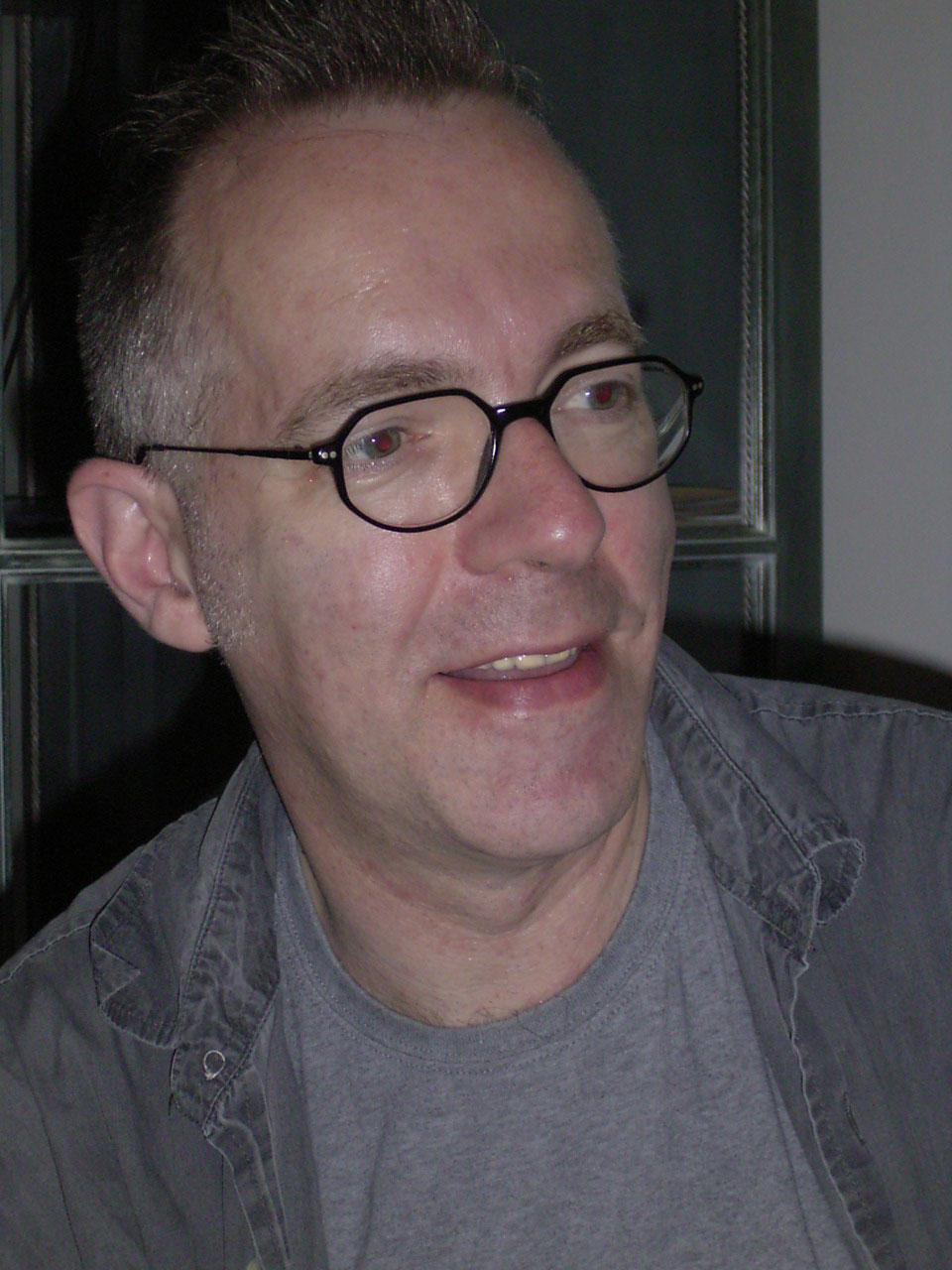
Biography:
Born in Munich in 1958. Lives in Berlin since 1981. He works as composer since 1976. Sometimes he worked also as actor and stage director. Performances of his works in several european countries, in USA , South Korea and at important festivals, like the Donaueschingen Festival, Musica Viva (Munich), the Ultraschall-Festival Berlin, Maerz Musik Berlin, Eclat-Festival Stuttgart etc. His opera „Das stille Zimmer“ was performed as commission of the operahouse Bielefeld in 2000. He wrote operas for different festivals, for the Hannover State Opera and the Stuttgart State Opera. Some recent compositions: The vocal symphony “Worte Steine” for solo-bass, choir and grand orchestra ((2007-2009), the madrigal-opera “Tragicomedia” (2009) and “Rezitativ und Arie” for string orchestra and percussion (2010), “Hypnos”(2013). Michael Hirsch received the Elisabeth-Schneider-prize for composition in 2001, and the Busoni-prize for composition in 2005. Scholarship for the Villa Serpentara (Olevano Romano) in 2008.
--------------------------------------------------------------------------------------------
Julius Holtz : Sonus : Korpus, Elektroakustische Komposition: „Paraconsistent Invention“
The piece „Sonus_Korpus“ is an acousmatic composition for a quadrophonic loudspeaker installation based on the noise of the city and the so-called “trance inducing monochrome sounds” - sounds which have healing properties used in medicine and passive music therapy. The piece is reminiscent of the traditional dichotomy between harmony and dissonance. These two contrastingly positioned musical events are brought into the modern day and observed from a medicinal perspective. Many studies prove that noise has a negative influence on the vegetative nervous system, whilst sounds from instruments used in passive music therapy have a positive effect on health. “Paraconsistent Invention” uses these sounds and works them into a composition in which the two poles of the dichotomy are present, yet simultaneously fuse with one another.

------------------------------------------------------------------------------------------
Ignazio Parisi : De arte venandi
De arte venandi (du latin “sur l'art de la chasse“) è un morceau acousmatique composé exclusivement de sons provenant du monde marin et est basé entièrement sur les connaissances acquises à travers l'étude de publications scientifiques dans le domaine de la bio-acoustique marine, de l'éthologie et la soundscape ecology, sur des données obtenues de l'analyse du comportement animale, la caractérisation des émissions sonores et de l'étude du paysage sonore marin. A travers le thème de la chasse, cet extrait, avec une forte connotation écologique , veut emmener à la connaissance des sons d'un environnement qui sous certains aspects reste encore très peu connu par l'homme qui le considère comme une ressource infinie ignorant souvent qu'il est habité d' etres vivants. D'un point de vue formel l'extrait est divisé en trois macro sections qui représentent trois typologies de chasse pratiquée en mer :
- La chasse des animaux pour se nourrir .
- La chasse des animaux finalisée à l'accouplement.
- La chasse de l'homme .
Dans l'extrait, le cycle circadien des émissions sonores des crustacés et poissons représenté (sciaenidae e gobidae) caractérise le (marine soundscape) de l'ile de Lampedusa (Sicily-Italy). Cette représentation a été réalisée en modulant des sons à travers l'élaboration de données météorologiques ( en particulier celles relatives à la radiation solaire ) fournies par la station météorologique Enea de Lampedusa. Parmi les sons d'origine geophysique, le son produit du glacier qui se détache de l'iceberg a été mis en évidence , la violence avec laquelle il s'effondre dans la mer fait prendre conscience du problème du réchauffement de la planète.
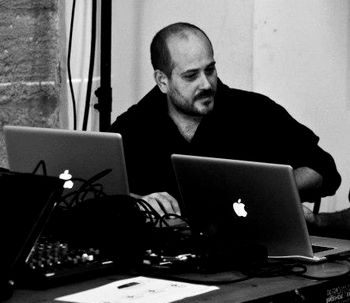
Biographie
Ignazio Parisi, né à palerme en 1978, interessé depuis de nombreuses années aux technologies appliquées à la musique. En 2005 il obtient les diplomes de technicien du son et programmateur MIDI à la Saint Louis College de Rome et en 2007 celui de Sound Designer à l'I.T.M ( Institut Italien pour les Technologies Musicales ) de Rome . Actuellement il fréquente le cours de Musique et Nouvelles Technologies auprès du Conservatoire “ V. Bellini “ de Palerme ( IT), étudiant avec Emanuele Casale et Giuseppe Rapisardi. Il a mis en oeuvre des travaux de restauration audio, post-production audio video, réalisation de montages prise directe, mixe de dialogues pour documentaires, films et animations. Vainqueur du prix speciale de Stanze-Community Festival of Sound Arts-2013 catégorie acousmatique. Vainqueur de la dixième édition du Prix nationale des Arts section Musique éléctronique et Nouvelles Technologies, catégorie morceaux acousmatiques de 2 à 8 canaux. Interessé par le soundscape, il a suivi un masterclass avec Peter Kutin, Yasuhiro Morinaga et Domenico Sciajno. Depuis 2012 il se consacre à l'étude des paysages sonores marins et sur la possibilité d'appliquer en musique des données scientifiques extraites d'experimentations effectuées personnellement ou de publications scientifiques. Actuellement il conduit des recherches auprès du bio-acoustic -lab de l'IAMC (Institut pour l'Environnement des Cotes) du CNR (Conseil Nationale des Recherches) de Capo Granitola (TP-Italy).
Gintas Kraptavicius : PopXeNa9
something like a tribute to J.Xenakis. impro computer music. electroacoustic vintage, nostalgia to
Biography:
Gintas Kraptavicius publicly known as Gintas K, a Lithuanian sound and interdisciplinary artist living and working in Lithuania. Gintas has been a part of Lithuanian experimental music scene since 1994. He is a co-founder of the initial Lithuanian industrial music group “Modus”. He became known for his sound manipulations, theatrical performances and conceptual art in the manner of Fluxus. Nowadays Gintas is working in the field of digital experimental and electroacoustic music. His compositions are based on granulated sounds, improv, new hard digital computer music, small melodies and memories. Collaborations with sound artists @c, Paulo Raposo, Kouhei Matsunaga, The Beautiful Schizophonic, David Ellis and others. In over a decade he has released numerous of records on labels such as Cronica, Zeromoon, Baskaru, Con-v, m/OAR, Copy for Your Records, Ilse and others. He is also making music for films, sound installations and participating in various international festivals (Transmediale.05, Transmediale.07). In 2010 he was a winner of the II International Sound-Art Contest “Broadcasting Art 2010” in Spain. A year later he has become a member of Lithuanian Composers Union. Gintas K is a curator of VA-MUU FOR EARS 5-6 (2CD 2010) that explores the sound art and experimental music scenes in Estonia, Latvia, Lithuania and Russia & “VA– Lithuanian Sound Art” (CD 2012) compilation - an introduction to modern sound art in Lithuania. His work included in VA An anthology of noise & electronic music #7 by Sub Rosa in 2013.
-----------------------------------------------------------------------------------------
Les Dupont : Le Chant des Dunes
Le Chant des Dunes Composé pour la journée Art & Science, Le Chant des Dunes est une mise en musique d’un phénomène sonore peu connu. Cette composition, d’inspiration dark ambient/indus, permet d’entendre cet insolite chant des dunes, tout en superposant un commentaire musical qui en souligne l’étrangeté et la beauté. Explication scientifique Certaines dunes de sable peuvent « chanter ». On en retrouve des témoignages dans de nombreux récits de voyage, tels ceux de Marco Polo, Charles Darwin et Lord Curzon.... Les dunes, lentement construites par le vent, peuvent se présenter sous de nombreuses formes. Quand le « tas de sable » devient instable, des paquets de grains dévalent sa face la plus pentue et le sable « chante ». Que l’écoulement d'une grande quantité de matériau puisse « faire du bruit » ne surprendrait pas tant si le son émis n'était pas une longue note grave, si puissante qu’elle évoque le grondement du tonnerre ou le décollage d'un avion de ligne et qu’elle fait vibrer le sol à l’instar d’un tremblement de terre. Comment ce phénomène s’explique t-il ? Si le son soutenu d’un instrument de musique est généralement obtenu par l'association d'une excitation (le frottement de l'archer sur la corde du violon, par exemple) et d'une résonance (la fréquence de vibration naturelle de la corde, modulée par le violoniste qui en change la longueur libre), un mécanisme similaire est à l'origine du « chant des dunes ». Lors d’une avalanche, les grains roulent les uns sur les autres. Soumis à l’accélération due à la gravité, ils s’entrechoquent avec la fréquence typique qui ne dépend que de leur taille. Les chocs entre les grains excitent le système à la fréquence f. A priori, les chocs entre grains se produisent de manière aléatoire. Chaque choc produisant une onde sonore locale, nous n’entendrions qu’un bruit de haute fréquence et de faible puissance, si les grains ne se déplaçaient pas de concert. Si l’onde sonore émise par un grain arrive à la surface, s’y réfléchit et revient sur le grain après exactement une période, 1/f, elle le pousse légèrement, ordonne son mouvement et celui de ses voisins. Les grains situés à la profondeur H = λ / 4 remplissent cette condition de résonance et se déplacent ainsi de concert. La couche située à la profondeur λ / 4 entre alors en résonance. En conséquence, la surface du sable est animée d’un mouvement périodique perpendiculaire à la direction d’écoulement. Telle la membrane d’un haut-parleur, elle produit une puissante onde sonore à la fréquence f imposée par l’excitation (dans le cas du chant de la dune, la fréquence n’est pas sélectionnée par le résonateur mais par l’excitation).

Biographie :
Présents avant, pendant et après la french touch, Les Dupont sont un duo électro créé par Didier Blasco et Louis-Frédéric Apostoly aux Beaux-Arts de Nice. Ils rejoignent en 1995 l'équipe Omnisonus/Polygram et les artistes Dax Riders, Pacman, Roussia, Djul'z, Armand. Les Dupont sont alors remarqués pour leur production discographique saluée par la critique (Magic, Coda, Keyboards, Only for Djs…) et leurs prestations scéniques (le Rex, SIR. CUS Cybernaut, Festival de Wattrelos). Ils font paraître leur LP Miracle (1996), premier album d’IDM (intelligent techno à la française) entre ambient, house et atmosphères frisant avec le cinematic jazz. Influencés par Coil, SPK, Throbbing Gristle, ils enregistrent également plusieurs compositions hardcore, et rejoignent plusieurs compilations Hardcore, dont Techno Trash Car (Polygram) et Hardcore Cybermix (Fairplay). Les Dupont réalisent en collaboration avec Lisa N’Elias et Manu le Malin le maxi Hardcore Fever EP- Extreme Vinyl sorti chez Polygram. Leur single "Cinetik Rex" deviendra une référence auprès des DJs hardcore. Après un passage à la Techno Parade en 2003, Les Dupont créent leur propre label Lysis et alternent productions indus, IDM et ambient.
------------------------------------------------------------------------
Chelsea Leventhal : II. Lucid
The eye’s process of adapting to the dark occurs in both rapid and slow processes on a biochemical, physical and neural level. The dilation of the pupil and convergence of rods in the retina are immediate reactions. However, the photoreceptor cells (rods and cones) take different amounts of time to adjust. The rods, which play a larger role in scotopic vision, may take more than 30 minutes to reach full sensitivity. During the process of dark adaptation the photopigments of the eye are regenerated and forms begin to come into focus. This piece attempts to simulate acoustically the experience of entering a very dark space. In this case, the hearing of the listener slowly sharpens and a sonic space emerges out of silence. This is a moment suspended in time, a slowly recovering space.
Biography:
Chelsea Leventhal (*1985 in Berkshire County, USA) is a sound artist and composer of electroacoustic music based in Berlin, Germany. She participated in the European Course in Music Composition and Technologies in 2007-2008 through which she completed studies at IRCAM in Paris and spent a semester working as a guest at the studios of the Technical University and University of the Arts in Berlin. In 2011 she completed graduate studies in electroacoustic composition with Robin Minard at the Franz Liszt School of Music in Weimar. Her pieces engage the re-animation and articulation of space, apperception of auditory archetypes and creation of sonic allegories, taking the form of multi-channel electroacoustic compositions, large-scale site-specific sound installations and sound objects involving kinetic components. Her works have been presented at IRCAM in Paris, the Inventionen Festival, the Academy of the Arts in Berlin, the New York City Electroacoustic Music Festival, ZKM in Karlsruhe and in other diverse and often unusual locations in Europe.
--------------------------------------------------------------------------------------
Michelle Lewis-King : Mélanie, Copenhagen and Becky, The White Building and Ed, Copenhagen
Pulse Project explores the relational interfaces between art, medicine, and technology. This sonic research examines and participates in the creativity of science within culture in its wider sense as Pulse Project interrogates the aesthetic and philosophical axioms that underpin contemporary medicine, music, technology and cognitive embodiment through creative exploration of their corollary “others”: premodern Chinese medicine and music theory. Drawing upon my experience as a clinical acupuncturist (with training in biomedicine), I use traditional Chinese medicine and music theories together with SuperCollider (an audio programming language) to compose bespoke algorithmic soundscapes expressive of an individual’s ‘being’ that registers along a spectrum between Asian and Western conceptions of the body. Each participant’s pulse is interpreted as a unique set of soundwave images based on traditional Chinese pulse diagnosis (a complex set of 28+ waveform images corresponding to states of being) and also according to traditional Chinese music principles and uses the pentatonic scale (gōng, shāng, jué,zhǐ and yǔ). By performing the role of artistinvestigator and by reading other’s pulses, I become an instrument or medium between myself and others and between cultural traditions for understanding and mediating the body. Pulse reading, case histories, notations of pulses and algorithmic compositions are all used together as methods for exploring the cultural encounter between art and medicine, self and others. The resulting soundscapes (composed from live pulse readings) are not sonifications of western principles of circulation and music theory but offer another perspective to conceive of/listen to the interior spaces of the body. This sound study (and resulting compositions) not only weaves diverse artistic, scientific and technological approaches together, but it does so from a unique and critical perspective that explores art, music, medicine and technology praxes from a broader ethnographic perspective one where Western cultural approaches to the science and technology studies is not the central or singular perspective.

Biography:
Michelle Lewis-King is an American artist and PhD research fellow for the Cultures of the Digital Economy Research Institute, Cambridge School of Art, Anglia Ruskin University, UK. Michelle’s research investigates the contemporary convergence of science, art, touch and technology as her creative practice draws upon her transdisciplinary training in fine art, performance, sonic art, Chinese Medicine, biomedicine and clinical practices. Michelle’s research is published in the Journal of Sonic Studies, ELSE Journal for Artistic Research, Reflections on Process in Sound Magazine and in various conference proceedings. Michelle has given numerous presentations on her research in the US, China, Germany, Denmark and at many universities across the UK. Michelle also exhibits her work internationally, recent works have been exhibited at: the Anatomy Museum, Kings College (London), the Ex-Teresa Museum (Mexico), the V&A Museum, Spike Island, The Royal Nonesuch Gallery in Oakland, CA and at Rencontres Internationales at various locations in Paris, Madrid and Berlin. An EP of her sonic research Pulse Landscapes was released in November 2013 by the experimental music label ‘Clang’.
---------------------------------------------------------------------------------
Nicola Monopoli : The Rite of Judgment
The concept of the piece is strictly related to the applied mathematical process because the inner corrosive aspect of the judgment and the complexity of the inner responses is represented by this recursive process. What happens to someone who is judged or who is judging? This work tries to give a deep reply which is impossible to ‘transcribe’ using words. The attention to the sonic details and the presence of a musical deep structure help the listener to understand the meaning of the work: sometimes a natural thing, almost primitive, may require some complexity to be expressed in the better way. The title ‘The Rite of Judgment’ comes from Stravinsky’s ‘The Rite of Spring’. The duration of this work, 4'33'', is a tribute to John Cage's work. The concept of the piece is strictly related to the applied mathematical process because the inner corrosive aspect of the judgment and the complexity of the inner responses is represented by this recursive process. What happens to someone who is judged or who is judging? This work tries to give a deep reply which is impossible to ‘transcribe’ using words. The attention to the sonic details and the presence of a musical deep structure help the listener to understand the meaning of the work: sometimes a natural thing, almost primitive, may require some complexity to be expressed in the better way. The title ‘The Rite of Judgment’ comes from Stravinsky’s ‘The Rite of Spring’. The duration of this work, 4'33'', is a tribute to John Cage's work.
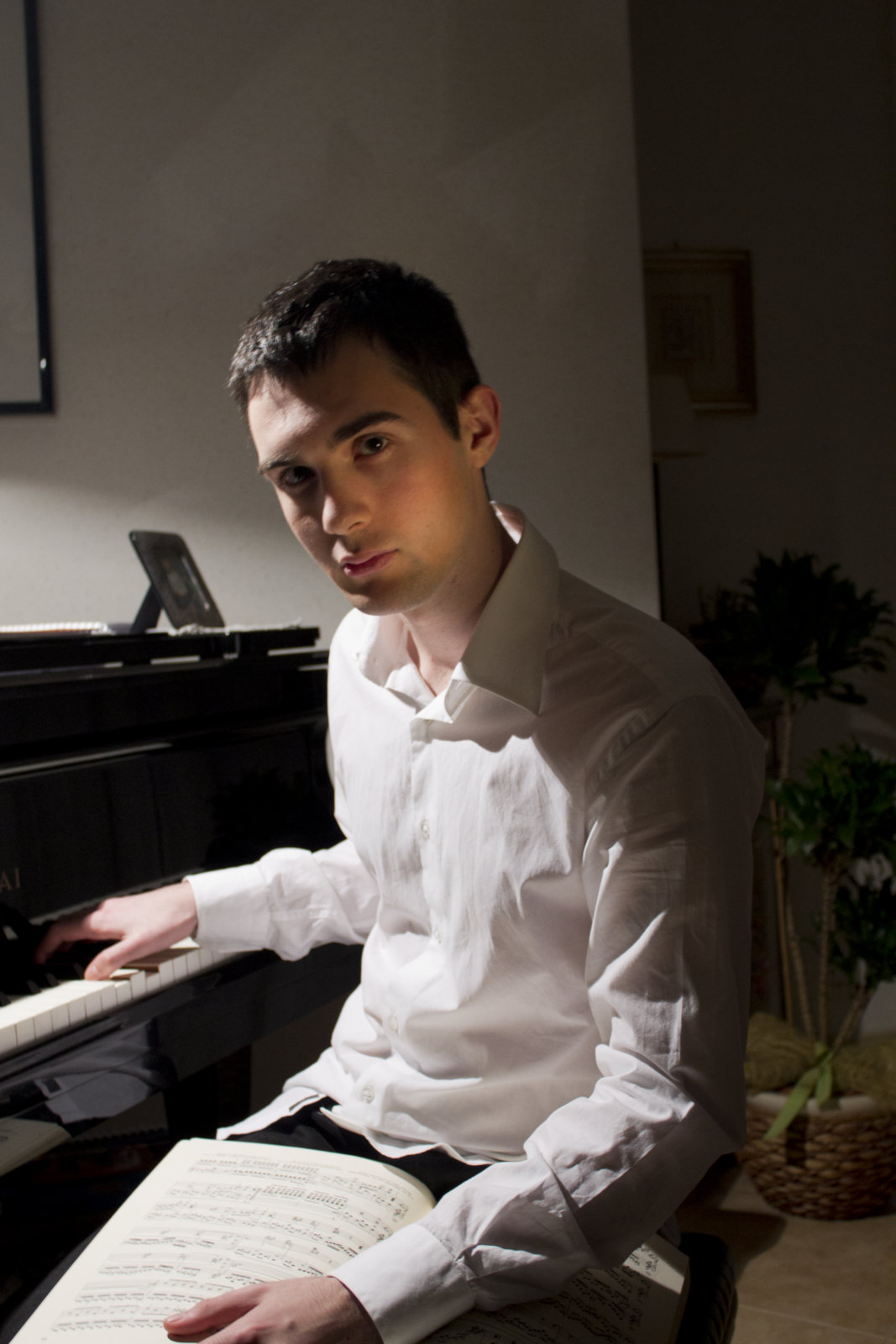
Biography:
He has earned a Bachelor in Music and New Technologies with honors and an honorable mention for his capacity shown in Music Informatics (with a thesis about algorithmic audiovisual composition). He also has earned a Master’s Degree in Electronic Music with honors (with a thesis about the real-time sound generation using SuperCollider). Both degrees are from ‘N. Piccinni’ Conservatory in Bari. Composition. Franceschini and M. Carlentini. Science. Composition of the Royal College of Music of London for 2014. Concert Performances, Awards, Other He won the Call for Projects ‘Principi Attivi’, organized by Apulia Region and was awarded € 25,000 for a project based on contemporary music. Italy, France, Germany, UK, Norway, Greece, Russia, USA, Spain, Netherlands, Canada, China, Taiwan, South Korea, Cyprus, etc. was selected for several festivals: De Montfort University SSSP Conference, Seoul International Computer Music Festival, New York City Electroacoustic Music Festival, Stanford University Linux Audio Conference, Asian Composer League Conference and Festival, ‘Musiche Nuove’, FIMU, Festival Internacional de Música Electroacústica ‘Punto de Encuentro’, Shanghai Conservatory of Music International Electronic Music Week, University of Central Missouri New Music Festival, Electronic Music Festival of the Center of the Cypriot Composers, San Francisco FCM, Di_Stanze, His works have been performed in major concert halls: etc. Sviatoslav Richter Memorial Apartment (Moscow), Chamber Hall of Moscow Philharmonic Society, Chiesa di Sant’Antonio and Curci Theatre (Barletta, Italy), A. Goldenweiser Memorial Apartment (Moscow), ‘N. Piccinni’ Conservatory Auditorium (Bari, Italy), V.I Vernadsky State Geological Museum of Russian Academy of Sciences (Moscow), “Santa Cecilia” Conservatory Auditorium (Rome), D. Mendeleev University of Chemical Technology (Moscow), Auditorium Vallisa (Camerata Musicale Barese, Bari, Italy), Kammermusiksaal of Hannover and Bogolyubov Library of Arts (Moscow), etc. Magazine Competition 2011′ organized by the Canadian magazine He studied with R.Santoboni, F. Scagliola, M. He has been accepted for the Artist Diploma in He is currently graduating in In addition he studied Computer His compositions have been performed in He was awarded third prize in the ‘Musicworks Musicworks and received a Mention at the PIARS AWARD 2013 (now Sonic Arts Award). radio stations: CKCUFM, WOBC-FM, Radio Taukay, Radio Cemat, Radio Kinetics, etc. of Electronic Music in 2012. Cambridge Scholars Publishing, Ablaze Records, Cimarosa Records and Casa Musicale Eco. Case Study for the project EARS2 at De Montfort University in Leicester (UK), where he was interviewed as a composer. his works, ‘La Quiete, La Fuga, Disordine’, for Amplified Cello and Electronics was performed during New York City Electroacoustic Music Festival 2013 at Elebash Hall, by the renowned cellist Madeleine Shapiro. Audiograft Jukebox (Oxford Brookes University), Basic.FM, Radiauteur, Streaming Festival, Sonus and ‘Multichannel Listening Library’ of Trondheim (Norway). composition, works on multimedia projects and uses the following software: Supercollider, Open Music, Mathematica, C-Sound, Max MSP, Visual Basic, HTML, After Effects and Processing. taught courses in MakeMusic Finale and Live Electronics and he has taught Music Technologies at the Liceo Musicale ‘Casardi’ in Barletta. He currently teaches Electroacoustic Music Composition at the Conservatory of Padua. His music has been broadcast by several He was finalist in the National Prize of The Arts His work has been published by He participated in the Composer His compositions have been selected for He is interested in computer-aided.
---------------------------------------------------------------------------------------
Alberto Novello : Unpredictable Interaction on Vimeo
A live-electronic structured improvisations for flute and computer based on the theme of quantum mechanics. The Planck's constant (written also as symbol "h bar") represents the energetic discontinuity implicit in all natural phenomena. This inherent granularity is counterintuitive in the everyday world because the energetic quanta are so small to be unobservable. The game between the sensuous fluidity of the flute and the discrete roughness of the digital sounds are confronted and fused to explore the subtle limits between continuity and discontinuity, between fluidity and steps, between perception and reality, visible and invisible, analogue and digital. The computer is programmed to follow the quantic probability laws and reply to the flute.

Biography:
Alberto Novello a.k.a. JesterN is a scientist, composer, sound and video artist born in Italy and currently living in the Netherlands. He graduated in Nuclear Physics at the University of Trieste, and then joined his passion for music experimentation and science completing the master “Art, Science and Technologies” at the Institut National Polytechnique of Grenoble, studying composition with J.C. Risset and C. Cadoz. He worked at the Philips Research, Eindhoven in the field of Music Information Retrieval producing several publications in international conferences and scientific journals. He obtained a PhD degree at the Technische Universiteit Eindhoven with a thesis in Music Psychology with A. Kohlrausch. He graduated in electroacoustic music composition at the Institute of Sonology, Royal Conservatory of Den Haag with P. Berg, J. Ryan, and R. Barret. He has assisted A. Lucier, Nicholas Collins and Trevor Wishart. His works have been presented in international festivals such as Rewire, Toolkit, Sonic Acts, Birmingham Network Festival, Koper Biennale, conferences such as NIME, ICMC, ISMIR, ICMPC and institutes for contemporary music research such as CCMAS in Mexico, GRM in France, Logos Foundation in Belgium, STEIM Amsterdam, and the Royal Conservatory of Den Haag. He was part of the Sonology Electroacoustic Ensemble. He has released his works on CD/DVD with DobiaLabel and CPSR. He has played with Evan Parker and Butch Morris in the Conduction series, and composed for the choreographies of Liat Waysbort, Marie Goeminne, and Ola Maciejewska. He has received awards and grants from the Nederlands Fonds Podium Kunsten, Regione Friuli Venezia Giulia, ResArtis together with Thamgidi Studio Fundation and Beijing Studio Center. He's part of the Federazione CEMAT for Electroacoustic Music in Italy and AIXIA, Italian Federation for Artificial Intelligence.
------------------------------------------------------------------
Benjamin O’Brien : BabyBirdBeat
BabyBirdBeat is an étude inspired by a quote from artist Bruce Nauman: “And sometimes the question that you pose or the project that you start yourself turns into something else, you know, but at least it gets you started.” (Art21, 2001) Often times when I compose, I test the structural integrity of a sonic object that holds my fascination, by pushing it into varied and foreign spaces. In the case of BabyBirdBeat, I composed a short fragment several months ago – comprised of baby sounds and birdsongs – and juxtaposed it against digital signal processing techniques that are quite foreign to my usual compositional process. Implementing parabolic distortion, impulse response convolution, beats, auto-tune, among others procedures, contextualized the snippet, and not only granted new meaning to the original object of my fascination, but also to the surrounding space.
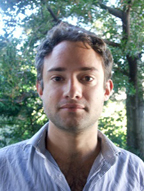
Biography:
Benjamin O’Brien composes, researches, and performs acoustic and electro-acoustic music that focuses on issues of translation and machine listening. He is a Doctoral Fellow currently pursuing a Ph.D in Music Composition at the University of Florida. He holds a MA in Music Composition from Mills College and a BA in Mathematics from the University of Virginia. Benjamin has studied computer music, improvisation, and theory with David Bernstein, Ted Coffey, Fred Frith, Paul Koonce, Roscoe Mitchell, and Paul Richards. His compositions have been performed at international conferences and festivals including ICMC, EMS, NYCEMF, TIES, and SuperCollider Symposium. He received the Elizabeth Mills Crothers Award for Outstanding Musical Composition and is a WOCMAT International Electroacoustic Music Young Composers Awards Finalist. His work is published by Oxford University Press, SEAMUS, eContact!, and Taukay Edizioni Musicali. He performs regularly with the international laptop quartet Glitch Lich.
------------------------------------------------------------------------------------------
Paolo Pecin : REDSHIFT
Redshift occurs when light or another type of radiation coming from an object is increased in wavelenght, thus lowering its frequency. It is possible to actually see this phenomenon when an object is moving away from an observer: its spectrum will shift to his red end. Redshift has also a great cosmological importance, since it supports the expanding universe theory and is used to understand the behaviour of astronomical objects such as galaxies, supernovae, pulsars, etc. My piece focuses on the idea of shifting of register: it starts with high notes and then is gradually dominated by the lower frequencies, although the high register is always present giving an overall impression of irregular expansion and change of timbre, obtain by different equalization of the same musical object. To better reconnect with the phenomenon of redshift the starting material of the entire piece is the sound of footsteps going away from the microphone that was recording them.
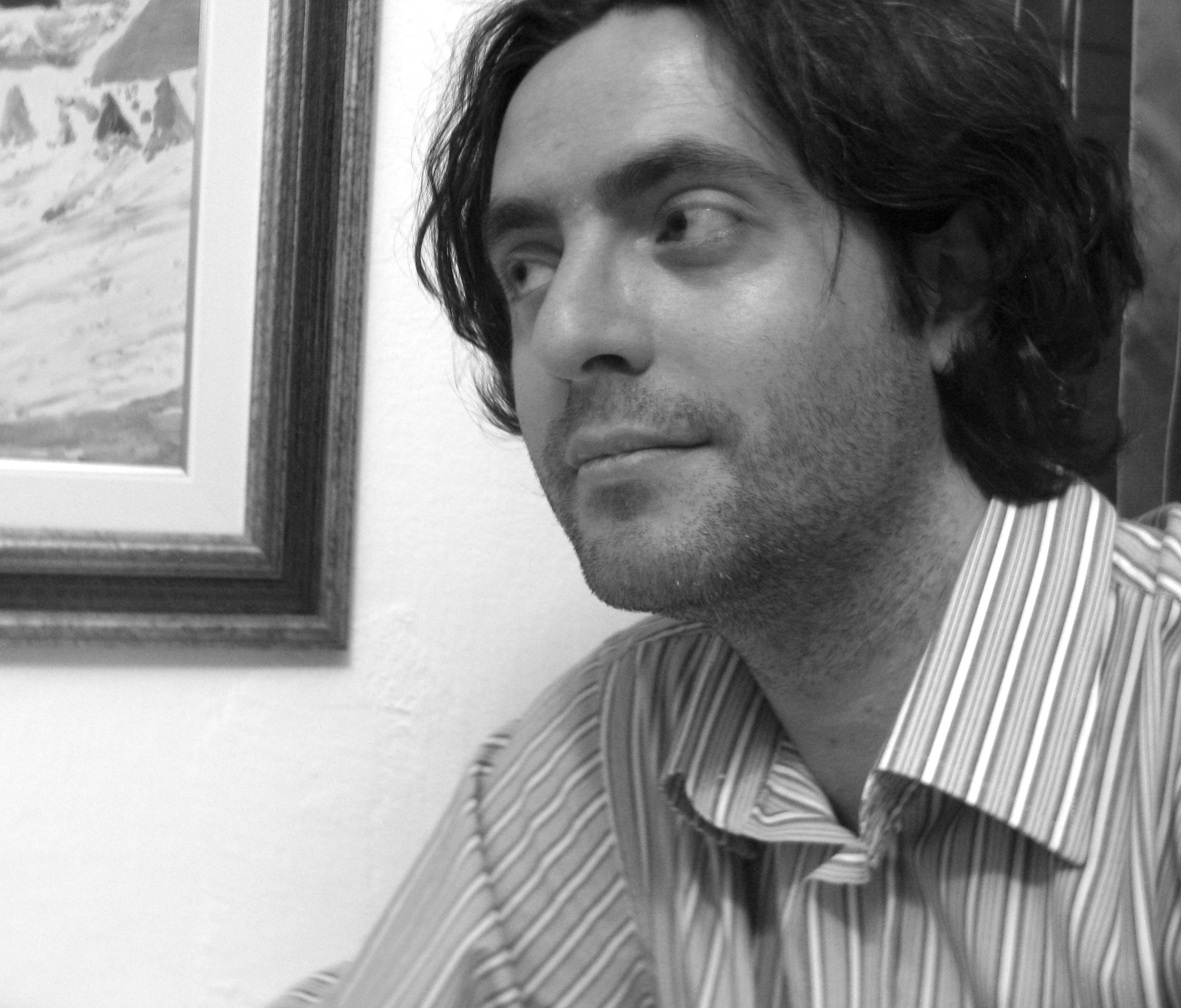
Biography:
PAOLO PECIN, IItalian composer and piano player. After graduating in piano enters the composition class in the conservatory of Milan, where he has just obtained his master degree with M. Gabriele Manca. Besides he attended variuos masterclasses with acclaimed composers such as Billone, Stroppa, Lopez Lopez, Lanza, Holliger, etc. His music is performed in various festivals by important performers. He is also studying conducting with M. Yoichi Sugiyama and is also active as a contemporary music performer: both as a pianist and a conductor. Graduated in foreign languages he is particularly bound to eastern European (especially Russian) culture and music
---------------------------------------------------------------------------------------------------------------
Silvia Pepe : Cygnus Loop
Cygnus Loop (Eastern Veil) The formal matrix of the piece - result of several elaborations of three single vocal sounds - is a portion of a specific nebula named “Cygnus Loop” after its morphology. This, like other nebulas, was born as a result of the death of a supernova. Also for timbric organization and growth in time I relatively followed the Eastern part of the development in space of the nebula, as if it was painted in 3d. The three vocal sounds, as a metaphorical sublimation, are Isolde's last words (form Wagner's Tristano) "Höchste Lust".
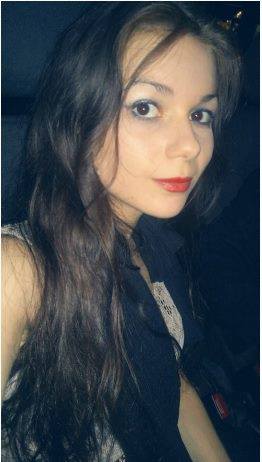
Biography:
Silvia Peppe was born in Milan in 1988. She raduated from Milan Conservatory G.Verdi and studied with Bruno Zanolini, Vittorio Zago, Gabriele Mance and others. Her music has been selected/committed for festivals, workshops and concerts focused on contemporary music. She also won international competitions as pianist and she is currently performing as lyric soprano with particular predisposition to contemporary repertoire. She is competing her singing studies with Nicola Martinucci. First Prize at Sincronie per Gesualdo copetition (Viel-Francesconi-Acciai) – performance in Festival Gesualdo 2013 and Silence Acusmatic Festival 2014. Her piece „La femme 100 tête“ has been selected in AFAM competition 2014 and performed by Divertimento Ensemble. Selection for Festival Opera Barga (Inaudita 2014: masterclass, workshop and cmmission for Contempoartensemble) by Francesco Filidei and Yann Robin.
-----------------------------------------------------
William Price : Woosh
William Price's music has been performed at numerous international and national events, including the World Saxophone Congress, International Trumpet Guild Conference, Nanyang Academy of Fine Arts Chamber Music Festival in Singapore, the Musica Viva Festival in Lisbon, and the New York City Electroacoustic Music Festival. Price currently serves as Associate Professor of Music at the University of Alabama at Birmingham.

Biography:
WOOSH Inspired formally by the elliptical orbits associated with long-period comets, WOOSH (2012) is divided into two parts: Part One explores abrupt, visceral changes in gestural noise, dynamics, and stereo spatialization, while Part Two focuses on timbral counterpoint and the superimposition of thick, slow-moving, granulated textures. Both parts use a single six-note musical phrase as their source material. Originally performed on a toy saxophone by the composer and recorded using ProTools, the six-note phrase was retuned, and then granulated and re-recorded using MacPod granular synthesis software. By varying the size of the grains, the shape of the grain envelope, and the rate and direction at which the soundfile is read in real time, the resulting textures were layered in such a way so that each sustained note would sound as if it emitted its own interior, yet erratic rhythmic dialogue. Analogous to the use of a notated grand pause, the ten seconds of silence that separates Parts One and Two is used to provide formal momentum through timbral contrast and dramatic expectation. WOOSH was composed and assembled in the composer’s home studio in Birmingham, Alabama.
-----------------------------------------------------
Bernd Schumann : Sieben Fingerübungen
Synopsis: My piece “Sieben Fingerübungen” (seven finger exercises) stands in the tradition of concert etudes as those of Chopin, which are valid compositions, although the focus is always on a technical aspect that characterizes the work significantly. Each one is dominated exclusively by a particular digital process - the first by a variation of the Karplus-Strong algorithm, the second by a sonification of Newton's law of gravitation; for the third and fourth I used the periodicity of cellular automats as base material, the fifth is dominated by bubble sort algorithms, the sixth is made of triangular functions based on quadruple prime numbers and the last one finally was inspired by the Brownian motion.
Biography:
Born 1979 in Chemnitz, Germany; currently living in Göttingen. Sound engineering, composition and electroacoustic music studies in Detmold, Bremen, Hamburg and Leipzig; 2004-07 working as a sound engineer for several recording companies, 2007-11 sound engineer at Anhaltisches Theater Dessau, since 2011 at Deutsches Theater Göttingen; several prizes e.g. Czech Society of Electroacoustic Music, Innova Musica Competition and Counterpoint Composition Competition. Performances in Germany, Austria, Switzerland, Czechia, UK, Italy, Russia and the USA.
----------------------------------------------------------
Julian Scordato : EARTH SONG (2014)
The radio waves propagating in the Earth’s atmosphere, ionosphere and magnetosphere assume distinct characteristics in relation to the emitting source as well as the receiving point, affected by phenomena such as reflection, refraction, diffraction and absorption. Considering the electromagnetic radiations generated by natural disturbances — transduced into the audio domain — the author aims at transposing the above phenomena into an audio feedback network in order to achieve imaginary results by exploring the effect of the variation of space-time parameters. The simple delay — combined with filtering — permits to place the sounds in new spatial configurations, while the spectral delay modifies the perception of the sound structure. The result is a kaleidoscope of sounds floating in a dynamic system with ever- changing variations of the rules of the counterpoint. Audio data courtesy of CARISMA (Canadian Array for Realtime Investigations of Magnetic Activity), operated by the University of Alberta, funded by the Canadian Space Agency.
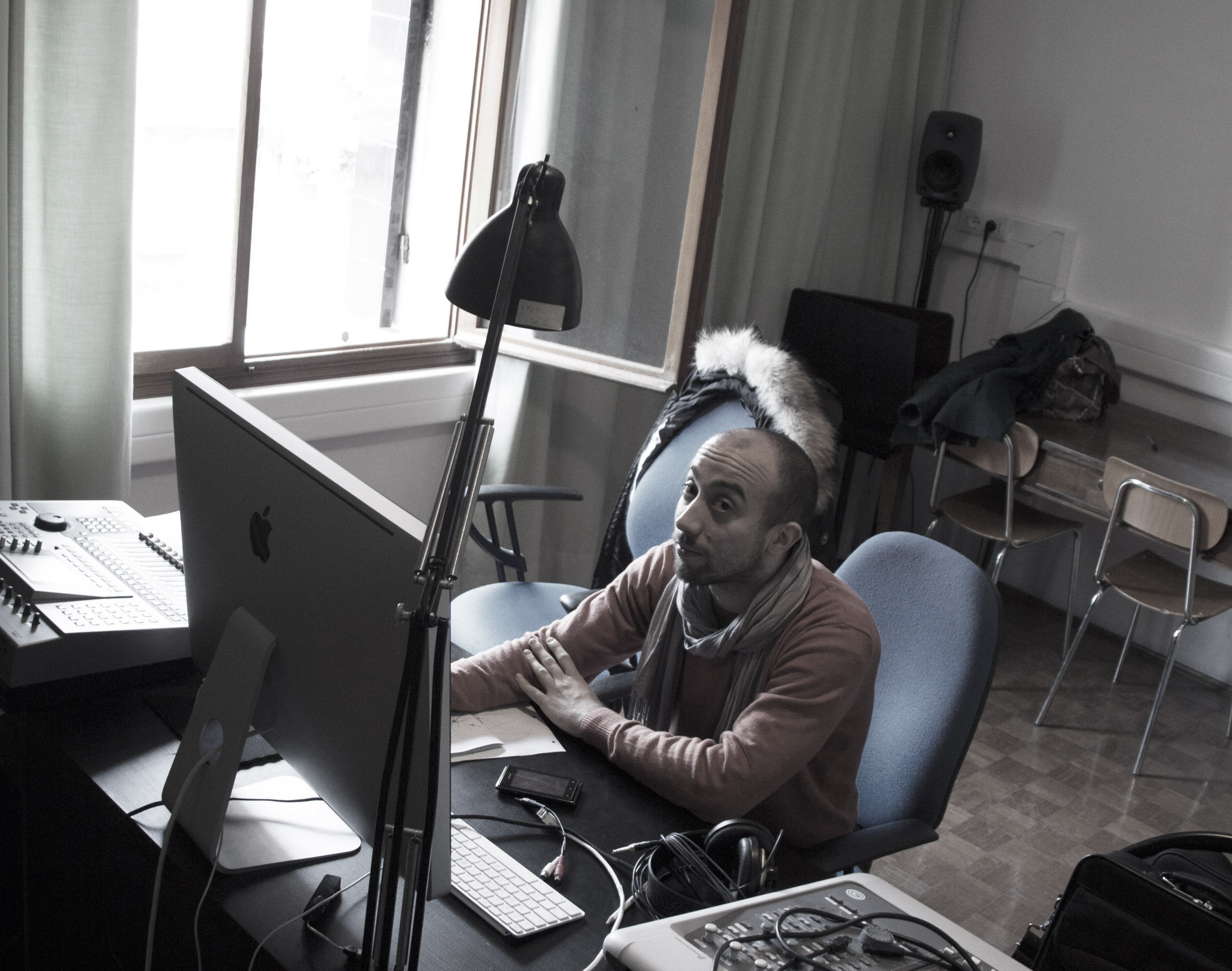
Biography:
Julian Scordato graduated in Composition and Electronic Music at the Venice Conservatory of Music. His chamber and electroacoustic music works have been performed in Europe, Asia and America (Biennale di Venezia, Festival 5 Giornate - Milan, Electronic Arts and Music Festival - Miami, EMUfest - Rome, Re-New Digital Arts Festival - Copenhagen, Gaudeamus Music Week - Utrecht, Siren Festival - Gothenburg, Deep Wireless Festival - Montreal, Punto de Encuentro - Valencia, Sonorities Festival - Belfast, Seoul Computer Music Festival and elsewhere), selected in international competitions (Roma Soundtrack Competition, Flores D'Arcais Composition Prize, Conlon Music Prize and others) and broadcasted in Italy and abroad. As a speaker and performer he participated in scientific events including the 17th and 19th Colloquium on Music Informatics, the 8th Sound and Music Computing Conference and the 1st European Sound Studies Association Conference, presenting interactive performance systems. He recently collaborated in the organization of projects focused on acoustic ecology and design: Venice Sound Mapping and “Il soundscape della città di Pordenone”. Ars Publica and Taukay Edizioni Musicali have published his compositions.
-----------------------------------------------
Mirjam Tally : Snake Charmer
About Snake Charmer (2013-14): All sounds recorded with Jorge Variego (clarinet, bassclarinet) in Studio Alpha at Visby International Centre for Composers, Sweden. It's created using extended techniques of clarinet/bassclarinet only, like whispering and singing into clarinet, timbre-trills, key-clicks, multiphonics etc, and later edited in Pro Tools, using mostly pitch-shift and reverse. Later I created a video version, using Quartz Composer.
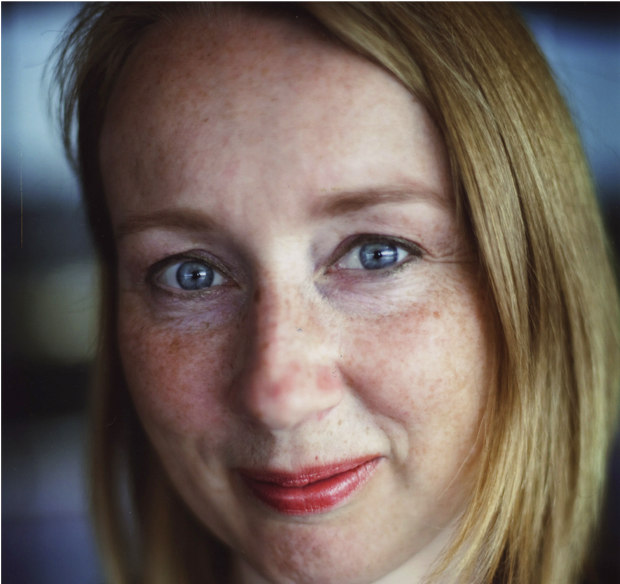
Biography:
Sound is central in Tally’s creations. Her music is a flow of playful contrasts where a sense of humour and poetic use of sound are blended to mix. Beside writing works for contemporary music scene, she is active as a composer of experimental films. Her earlier works are mainly for chamber ensembles and electronics. In recent years, importance of orchestral music has increased in her oeuvre. She has graduated from the Estonian Academy of Music as a student of Lepo Sumera in 2000. Since 2006, Tally lives on the island of Gotland, Sweden. Her work Turbulence (2006) for symphony orchestra and electric guitar, has received some international recognition. In 2008, Turbulence was performed at the ISCM’s World New Music Days (later at the Venice Biennale and was selected as a recommended work at international Rostrum of composers). For Turbulence, she was awarded the Little Christ Johnson Prize in 2008. In 2009-2010, she was Composer in Residence at Swedish Radio P2 channel. Since 2012, her orchestral works are published by Gehrmans Musikförlag.
--------------------------------------------------------------------------
David Arango Valencia : INSIGNIFICANCE
INSIGNIFICANCE: electroacoustic, 4m52, David Arango Valencia, 2013 “How amazingly unlikely is this moment” INSIGNIFICANCE was inspired by Pale-blue dot. A photograph of planet earth taken in 1990 by the Voyager 1 at a distance of 6 billion Km. The photograph was requested by Carl Sagan.
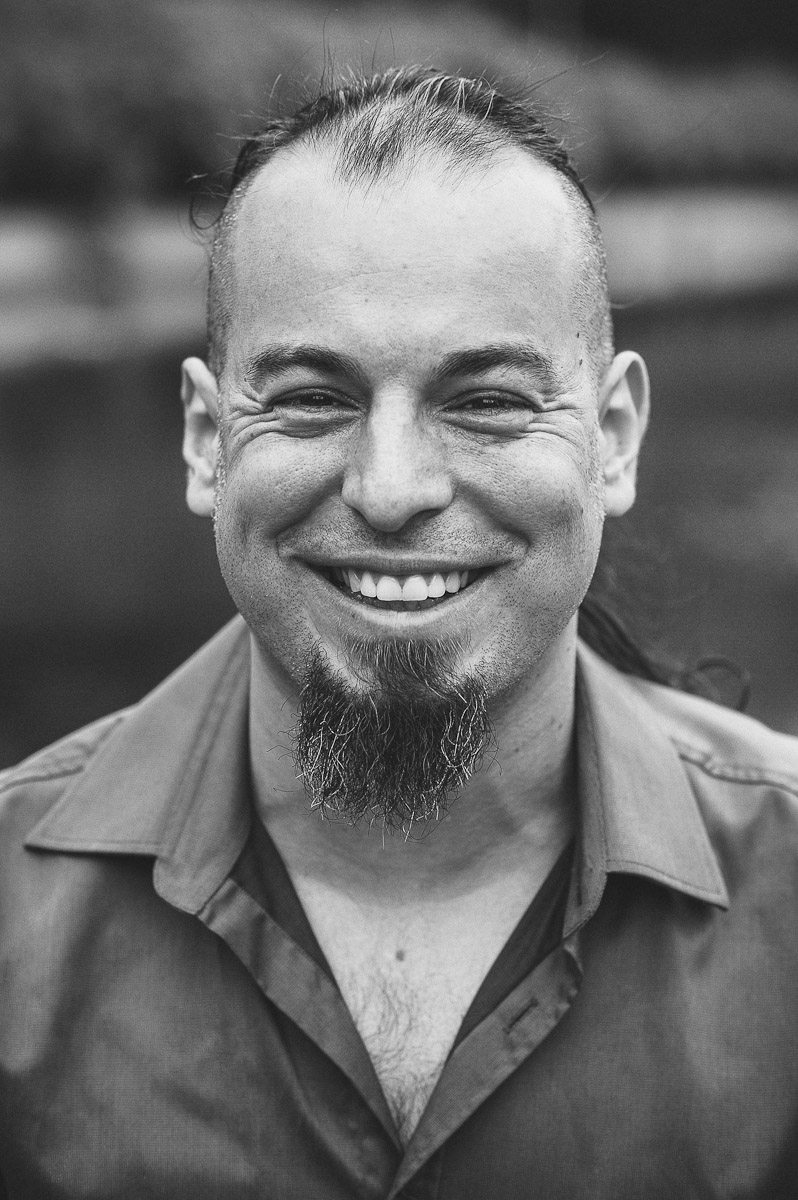
Biography:
My music career began as a keyboard player in various projects including: electronic, rock and industrial metal, while possessing a background in classical piano. After my first experiences, I became interested in sound design and the ability to use sound in order to create, and explore, a unique language within music. I exploited my first ideas in sound field recording for documentaries and short films. While attending Cégep de St-Laurent, under the direction of electroacoustic composers: Michel Tétreault and Pierre Marc Beaudoin, I developed a deeper appreciation for composition and it’s ability to transmit ideas. Presently, while attending Université de Montreal under the direction of Jean Piché, Robert Normandeau and Martin Bédard, I continue to explore the boundaries of electroacoustic music and creation.
--------------------------------------------------------------------------
Juan Carlos Vasquez : Collage 4 Landscape
Piece composed for the Hilltown New Music Festival, July 2013 at Castlepollard, Co. Westmeath (Ireland). Inspired by Pierre Schaeffer’s quote “Sound is the vocabulary of the nature”, and created by manipulating and processing a field recording taken in Cali, Colombia. After careful analysis of each individual sound in terms of frequency content using specialised equipment, a clear relationship was discovered between the different sound sources (mainly different types of animals). Then, a careful expansion and composition process was followed in order to discover hidden textures and timbers within such a balanced sonic landscape. Collage 4 was also part of the "Symposium on Acoustic Ecology" organised by the University of Kent (November 2013 - United Kingdom), "Kinokophonography" festival at the New York Public Library for Performing Arts (February 2014 - United States) and featured on “A Listening Room”, a sound-art focused gallery located in Helsinki (Finland).
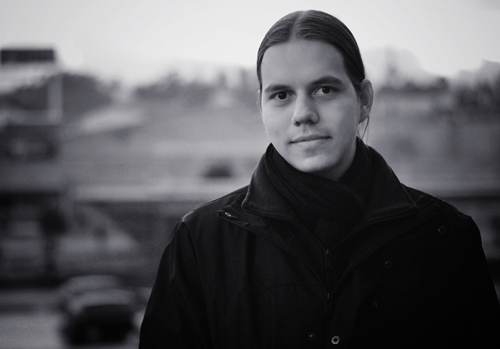
Biography:
Juan Carlos Vasquez is a London-based sound artist and composer from Colombia. He has participated as a sonic artist, composer and/or performer in events within the United Kingdom, United States, Italy, Ireland, Finland, Brazil, Argentina, Chile, Colombia, Peru, Bolivia and Ecuador. Commissions by the Westminster and Chelsea Hospital / Museum (UK) in partnership with Royal College of Music (UK), the Arts Council through the Wiltshire Museum (UK), Polish Artists in London “PAiL” (UK) and the Hilltown New Music Festival (Ireland). Record deals with Important Records (USA) and Ablaze Records (USA/Australia), including airplay in many radio stations around the world. Other spaces supporting the diffusion of his work include the University of Kent (Symposium of Acoustic Ecology), Wesleyan University (Society of Electro-Acoustic Music in the United States 2014 National Conference), The New York Public Library (Kinokophonography), Leeds College of Music (International Festival for Artistic Innovation), Queen’s University Belfast (Sonorities 2014), Salone Internazionale del Mobile 2012, The Savoy Hotel (Emperors for Tea), Florida International University (New Music Miami Festival), New York City Electroacoustic Music Festival and the Electronic Language International Festival (FILE – Brazil).
-----------------------------------------------------------------
Gianluca Vergani : Materia in espulsione. Protoquasar
Purpose: Generation of sound embryos not yet fully defined (incomplete) and, therefore, no place in an evolutionary perspective; materially arising from a source generating universal. Combination of art and science: Parallelism with the Vision of generative cosmological theory of the astronomer "heretic" Halton Arp, based on the model of the "steady state" of Fred Hoyle. Hoyle: the continuous creation of matter in a process that leads to galaxies in an expandin universe always identical to itself: the new galaxies occupy the space previously held by galaxies front and away in the apparent recession. Arp: The new material is identifiable in the quasar (cosmic seeds contain the genetic apparatus ofthe generating source) expelling through the spiral arms of galaxies. Agglomerates of multi-dimensional layers moved in both horizontal and vertical directions, separated by the eaesura unidirectional revealing another dimension (the composer present in the creative act of combinatorial choice of material?) Development of the contortíons of matter due to the expulsion of the source of genetic; crystallization ofthe incomplete sond embryos; development of complex sound embryos but never in its entirety. Sound materials: Concrete sounds derived from L’0rizzonte degli eventi (piece for cello solo by Gianluca Vergani) processed by filters and the phase vocoder and synth sounds.
Biography:
Gianluca Vergani is composer, musicologist and researcher. He studied composition and electronic music at the Civica Scuola di Musica (IRMUS: Istituto di Ricerca Musicale) in Milan and then at the Conservatory in Como. He completed his academic studies in 2004 and graduated (PhD) in musicology at the University of Pavia with the following thesis: The noise as musical material. Identification and analysis of sound sources on the string instruments. He attended several courses and seminars of composition in Europe benefiting from scholarships, dealing mainly with H. Lachenmann and P. Billone. From 2003 to 2006 he organized and directed Insulae Electronicae - International Composition for Young Composers of Electronic Music in Cremona (Italy). His compositions have been performed in festivals and institutions: Acanthes in Avignon (France), Ferienkurse für Neue Musik in Darmstadt (Germany), Institut International de Musique Electroacoustique in Bourges (France), Ecole National de Musique in Villeurbanne – Lyon (France), Di Nuovo Musica and Compositori a Confronto in Reggio Emilia (Italy), Licences in Turin (Italy) and Paris (France), Settimana delle Arti in Como (Italy), Villa Simonetta in Milan (Italy), Stagione dell’Associazione Musicale Lucchese in Lucca (Italy), Auditorium of the West Australian Symphony Orchestra in Perth (Australia)… He’s a lecturer active: his studies (on the space of the complex sound; on the perception of the sound in the concrete and inner reality; on the Luigi Russolo and Futurism) have been explained at the University of Pavia, Varese, Potenza and Cremona. From 2005 he’s librarian at the Symphonic Orchestra and Symphonic Choir Giuseppe Verdi in Milan.
---------------------------------------------------------------------
John Wiggins : Among The Unimaginable
"Among The Unimaginable" is a study in "spatial and textual” manipulation of sound. This was the compositional goal. To organize sound like this, you MUST have a sense of rhythm, dynamics, tone color and above all, a real desire to discover things you never heard before. This means, sound organizing processes and techniques must always be evolving to help find these sounds, your imagination evolves as well. More than anything, it's the sounds that emerge without your intention - that are unimaginable. A discovery really, because this approach leads to sounds you never heard before. This approach leads to discoveries. Equally these sounds exist in a unique/strange/unimaginable space, which needs to be created, contrast and symetry. Naturally this helped me understand the Quantum Wave Functions of the Universe and I think, fluctuations in space creating forms are exactly like fluctuation in air creating sounds - different scale.
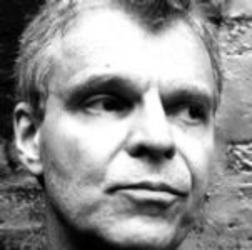
Biography:
Starting his career at MSG and freelancing as a live sports sound mixer, he wrote music for Macy’s commercials and won The Big Apple Award in 1979 for his music for the American Heart Association. He became part of the brand new “cable industry” as Supervising Sound Editor at HBO Studios for 22 years and built their Post Audio Department, mixing such critically acclaimed documentaries as “America Undercover – High on Crack Street”, “Autopsy”, “Dwarfs” and Academy Award Winner - “King Gimp” . In the year 2000 he was also given an Emmy by HBO Sports for 10 years of award winning sound design and mixing on such Emmy winning documentaries as “When It Was A Game”, “Do You Believe In Miracles (1980 US Hockey Team “ and more. In 2001 Wiggins opened his own Sound Production companies - Wonderland Sound and “no wonder music” sound design and mixing A&E Biographies, won an Emmy for “Best Mix” in 2009 for HBO Sports “24/7” and an Emmy in 2010 for HBO Sports “Assault In The Ring” as well as mixing and sound designing promo campaigns for “Angles in America”, “Rome”, “Big Love” “The Sopranos”, “Boardwalk Empire” , NBC Sports , Spike Lee and more. Wiggins has a deep involvement with the production of sound in New York’s TV post market as well as participating in the commercial and International new music scene. He is a long standing AES member and a respected innovator with goals and vision about sound as art.
---------------------------------------------------
Roberto Zanata : SPECTRUM
SPECTRUM : An ear is always something disturbing or, as Freud would say uncanny (Das Unheimliche). An ear is an organ, familiar to us, yet it embraces all the power of the mask and of what goes beyond its function as an organ: the listening. Unlike animals, human beings are prone to desire and capable of navigating through the imaginary capture. By isolating the screen function against a hypothetical hyper stimulation, a man is able to stay inside the imaginary (illusionary) fluctuation, thanks to the screen that, just like a frame, prevents him from slipping into deception. An ear, whether it is real or simulated, is always the trace of a presence. Listening is outside; it is not something that participates as an Ego extension in psychic space, but rather something that the phantom depends upon, it is a desire around which a vacuum is created, which is the instinct. It is phantasmal because it is out there (also out of my control), but always inherent to the instinct. The composition was realized enterely with the soft synth open source Supercollider.
Biography:
Roberto Zanata was born in Cagliari, Italy where he also graduated in Philosophy. A composer, musician and musicologist in electronic music, he studied and graduated in composition and electronic music at the Conservatory of Cagliari. In the middle of nineties Roberto became active in Italy and abroad. He wrote chamber music, music for theatre, computer music, electroacoustic and acousmatic music as well as multimedia works.




